Cyril Kuhn and Becky Kolsrud‘s cats don’t like socializing too much. After enduring several hours, they will stretch out and yawn incessantly as if to hasten their guests’ exit. Luckily, Becky and Cyril are much more hospitable than their cats. As independent visual artists, this pair draw inspiration from each other in work and life. Perched on three ascending levels of hillside, their home is tucked behind an imposing stone staircase in a little-known canyon neighborhood near downtown Los Angeles.
Openly sharing insights into their artistic careers and life in Solano Canyon, Becky and Cyril offer a guided tour of their gorgeous cabin. Around the wood-panelled house is ample garden space, filled with trees and countless white marble statues of Buddhas and Japanese deities. Only ten minutes from downtown Los Angeles, this area resembles a pastoral countryside. One night a week, however, the Dodgers stadium lights illuminate the sky like daytime and the noise of the baseball fans upsets the tranquility of the canyon. Over the hum of power tools cutting into wood and the steady rhythm of hammering, Becky and Cyril compare observations on the intermingling of American and European lifestyles, home renovation stories and Cyril’s fervent passion for boxing.
This portrait is part of our ongoing collaboration with ZEIT Online who present a special curation of our pictures on their site.
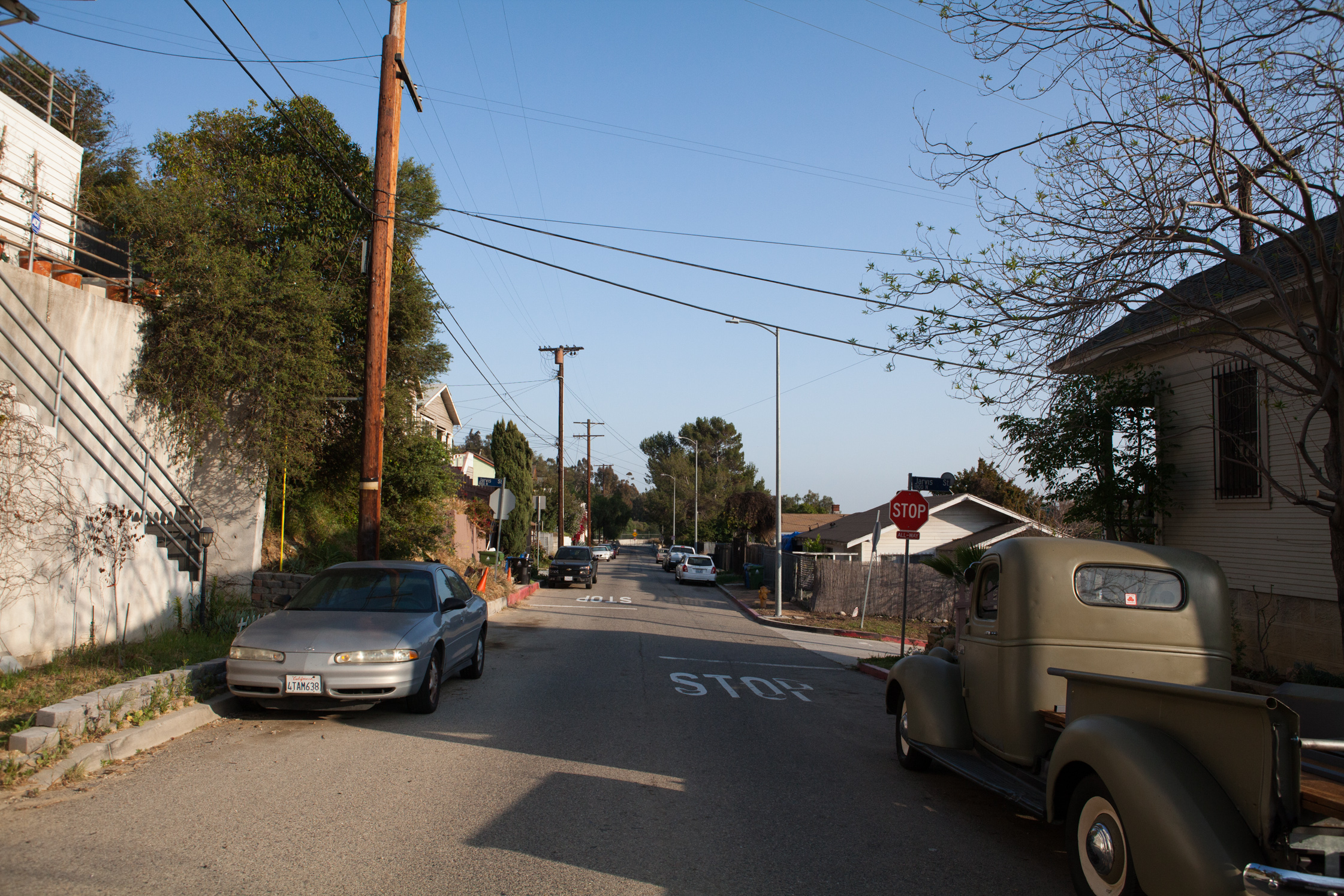
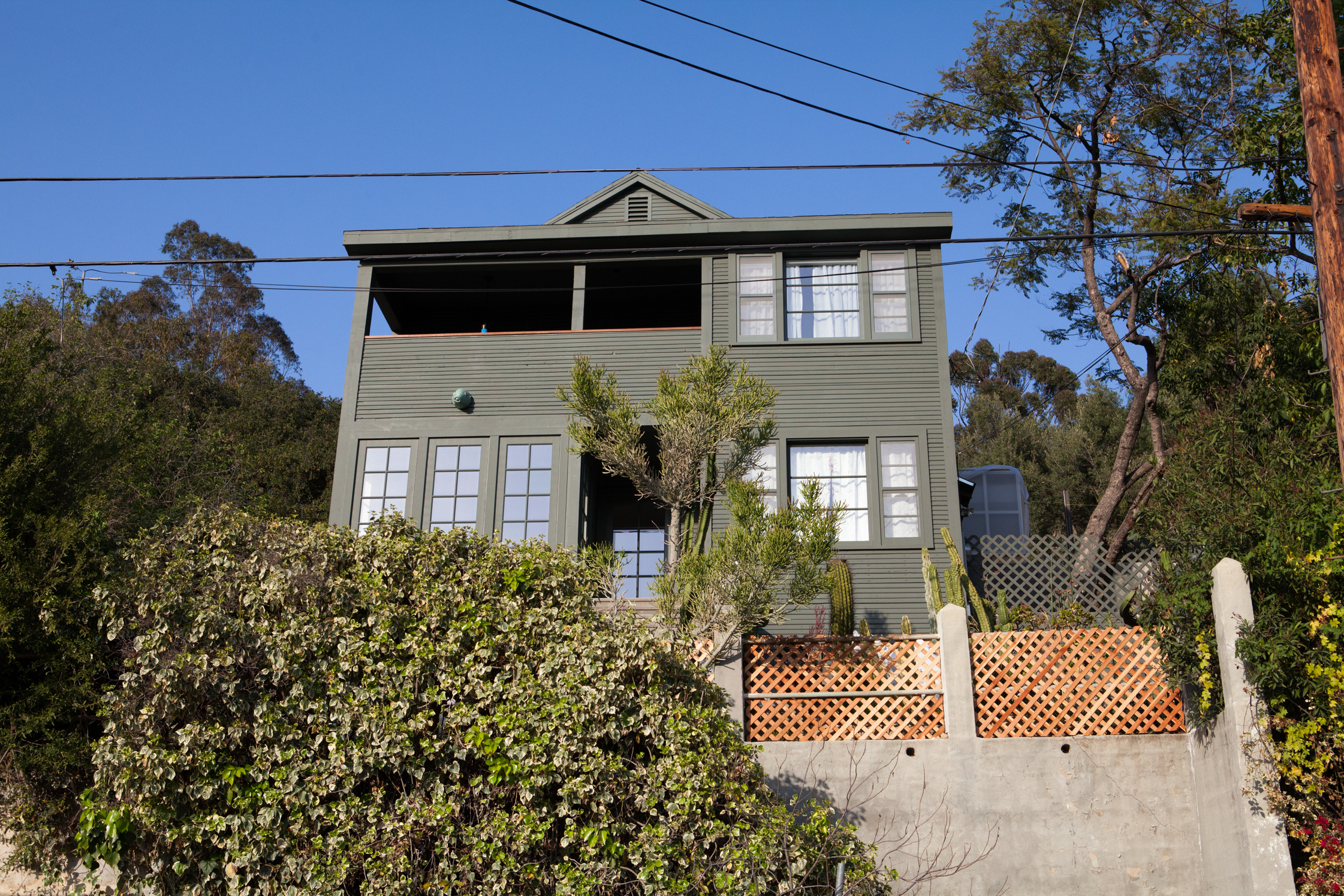
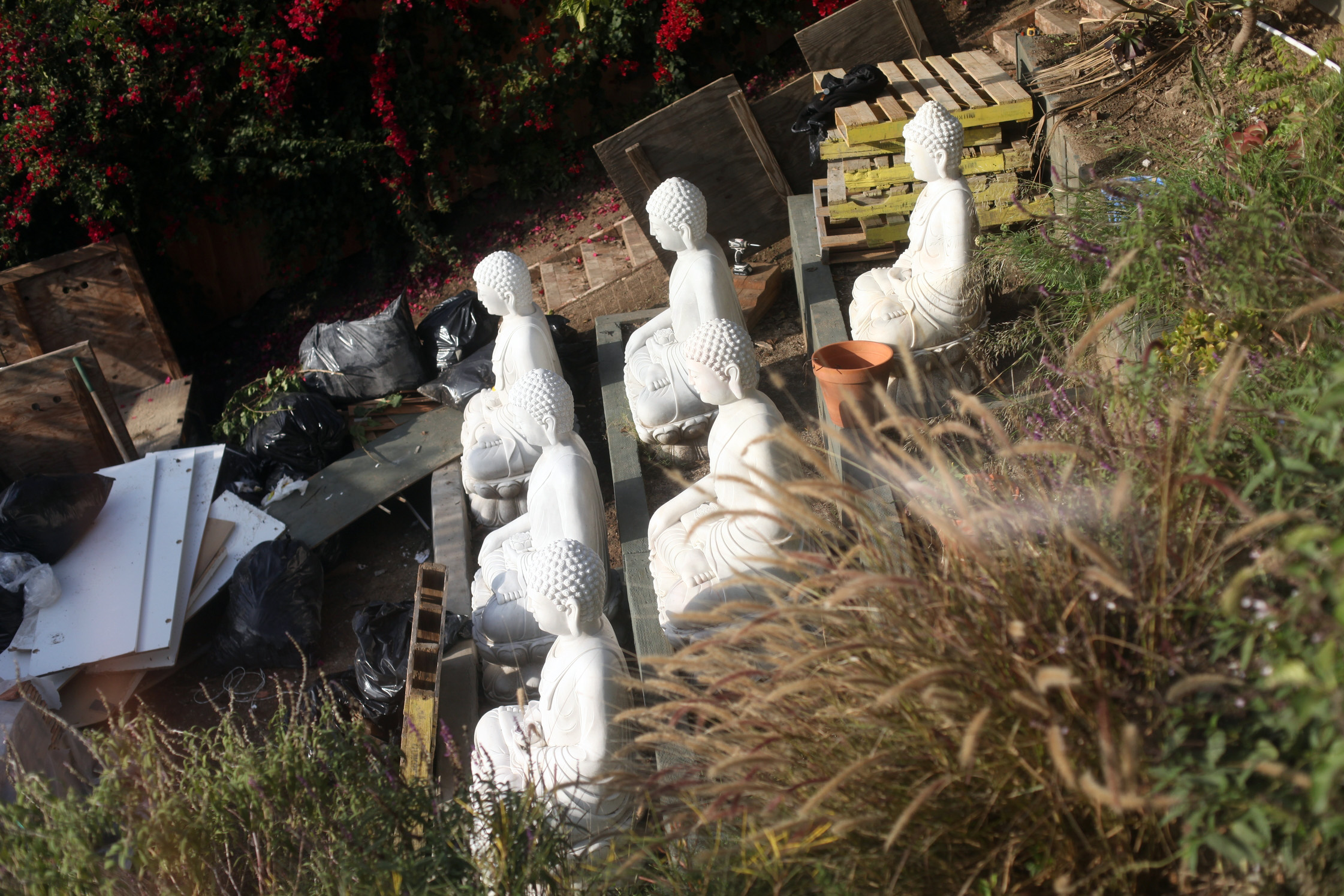
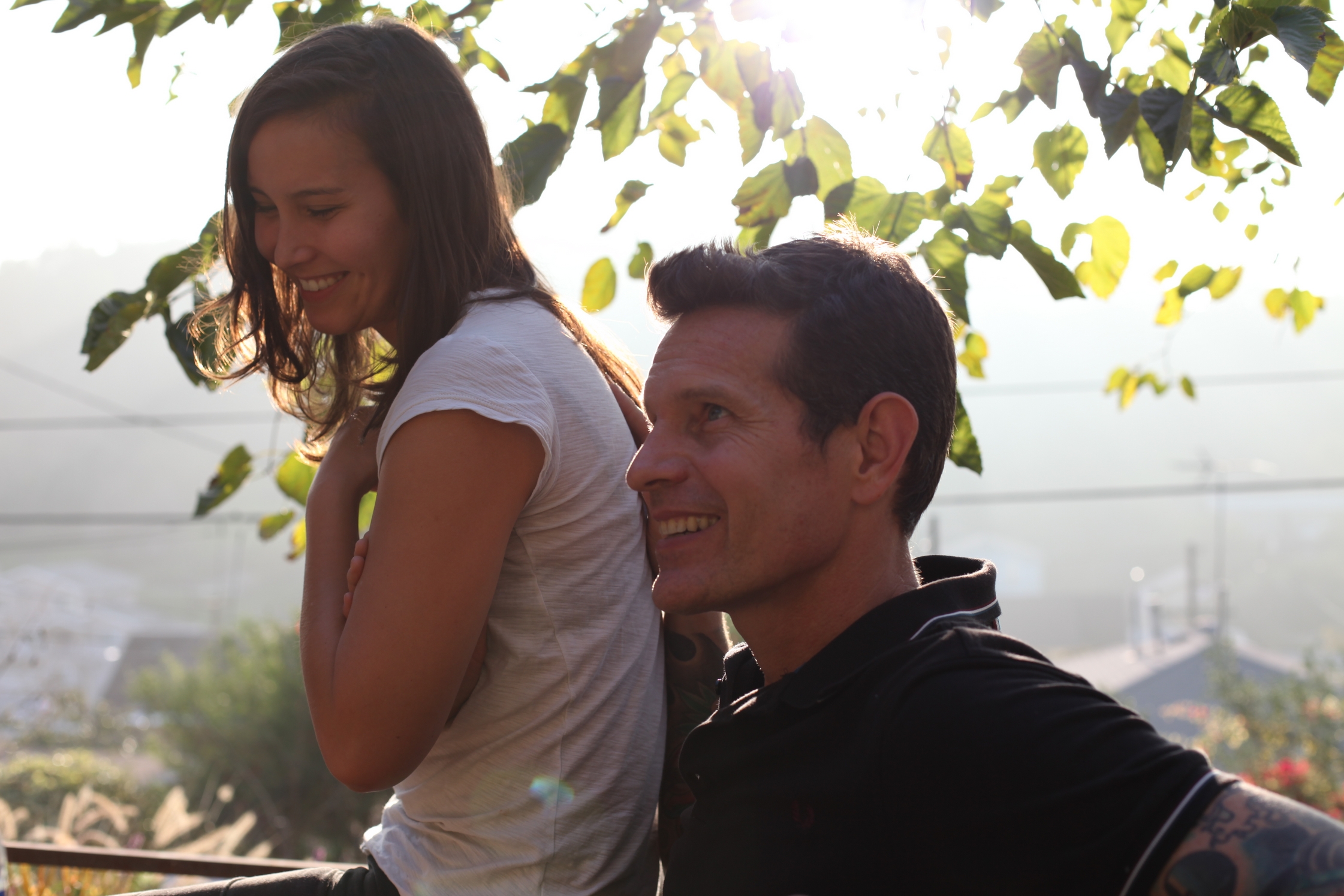
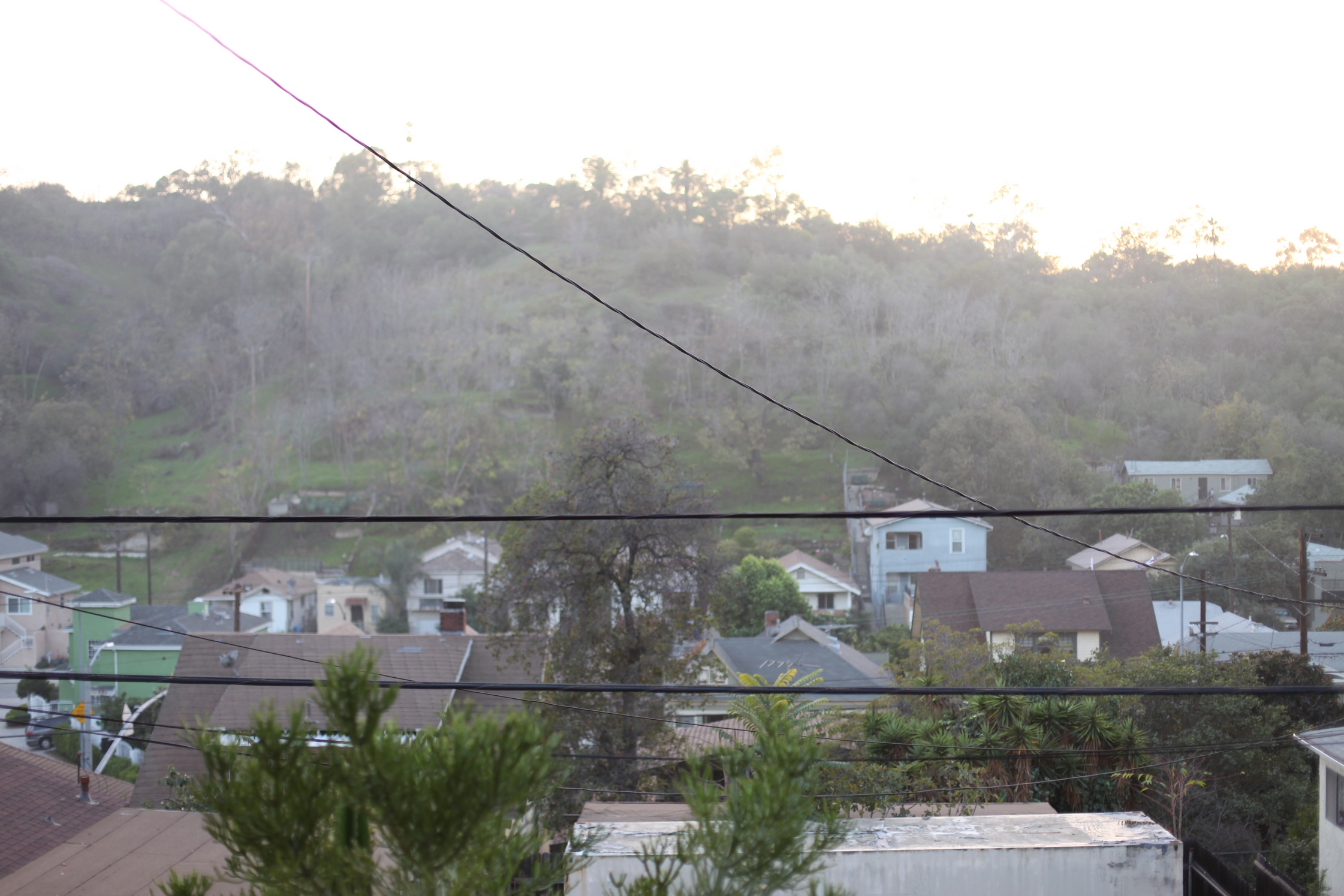
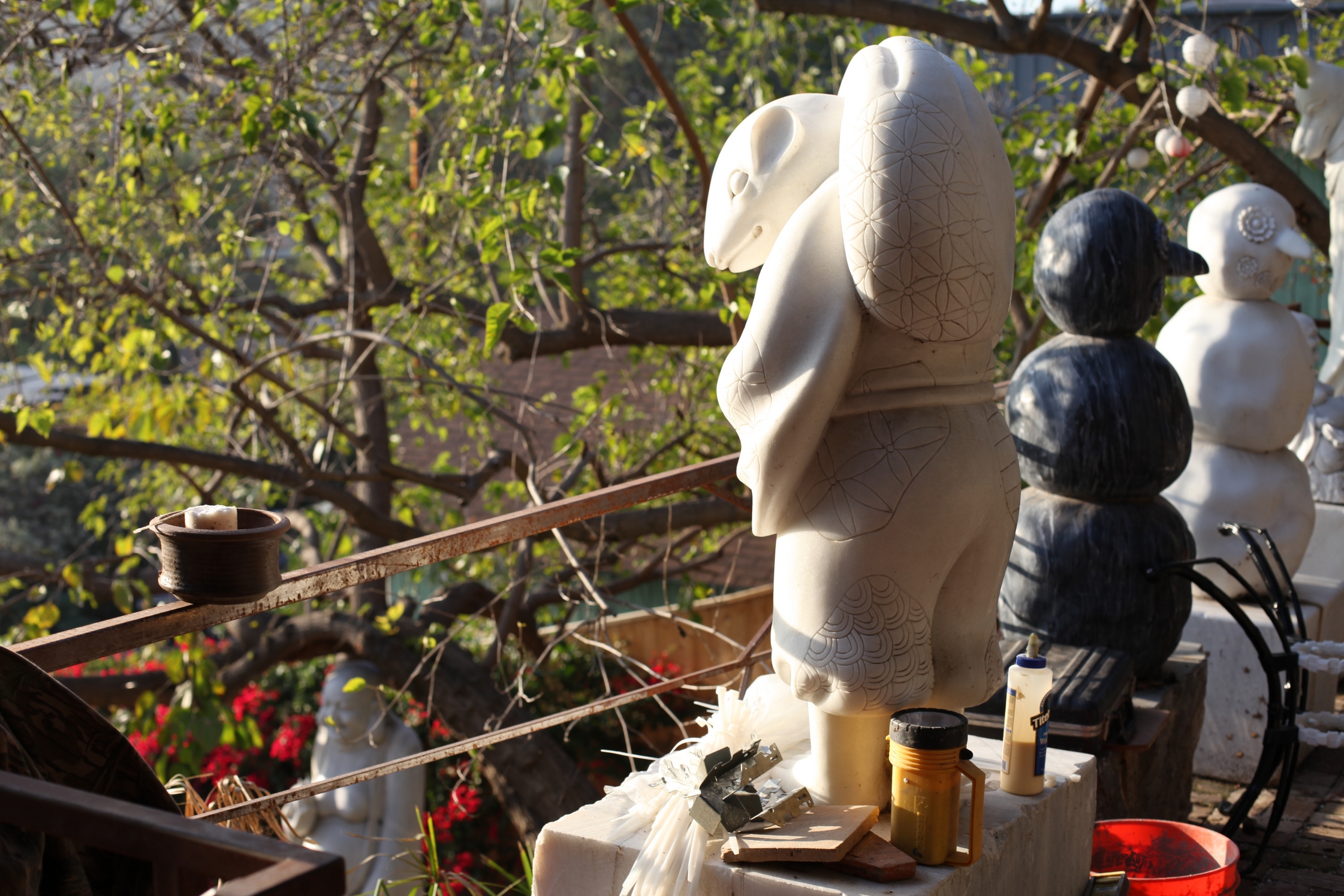
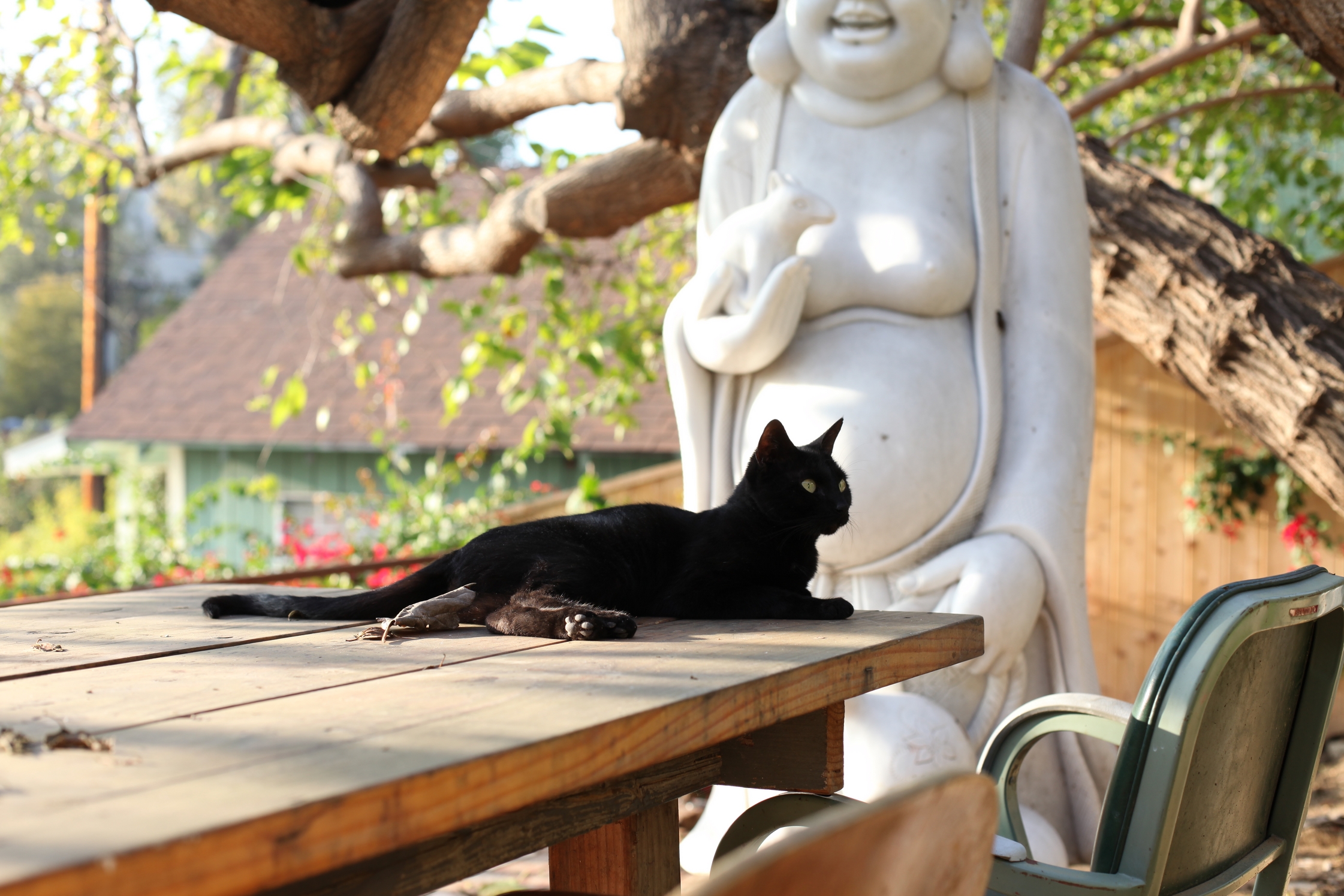
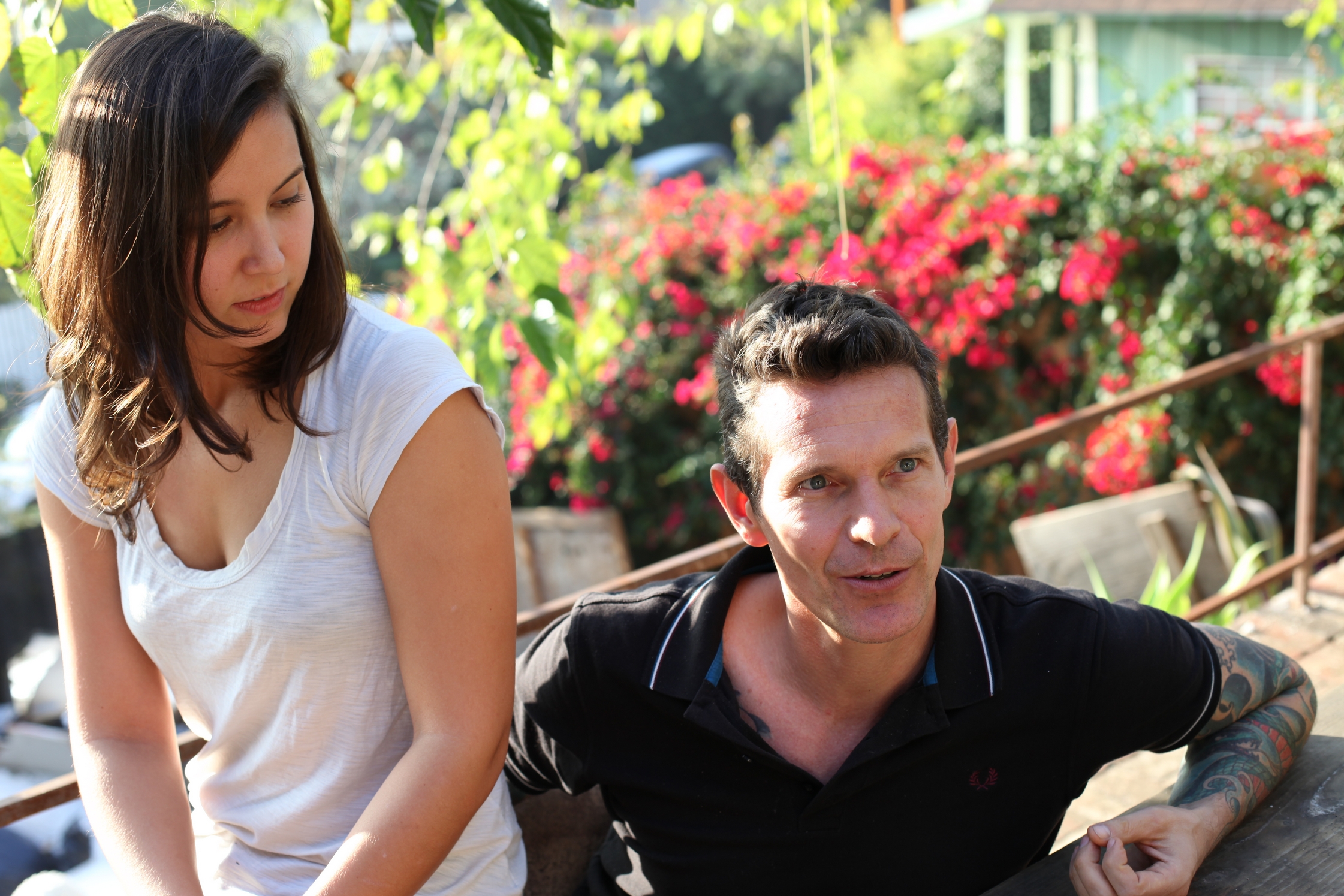
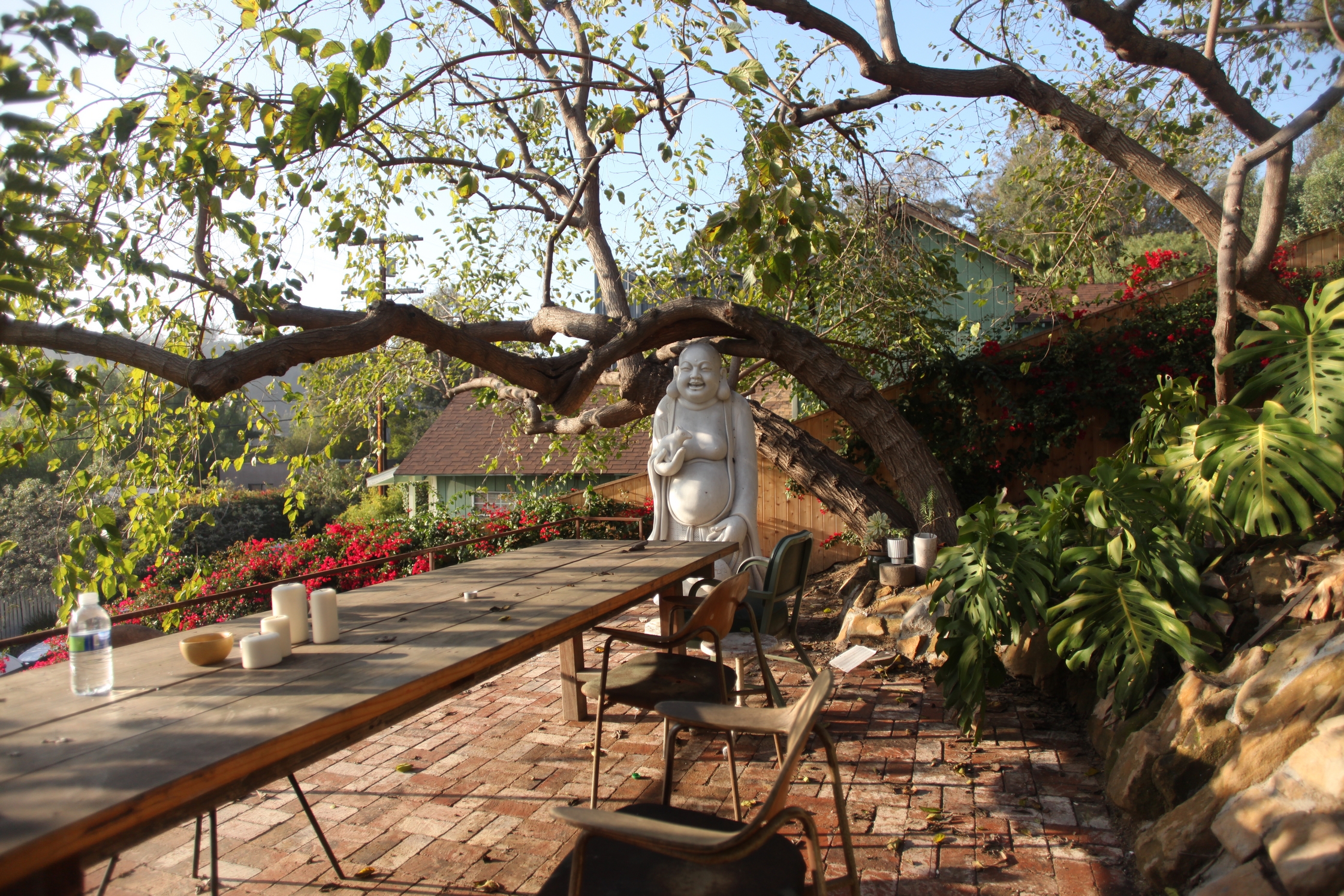
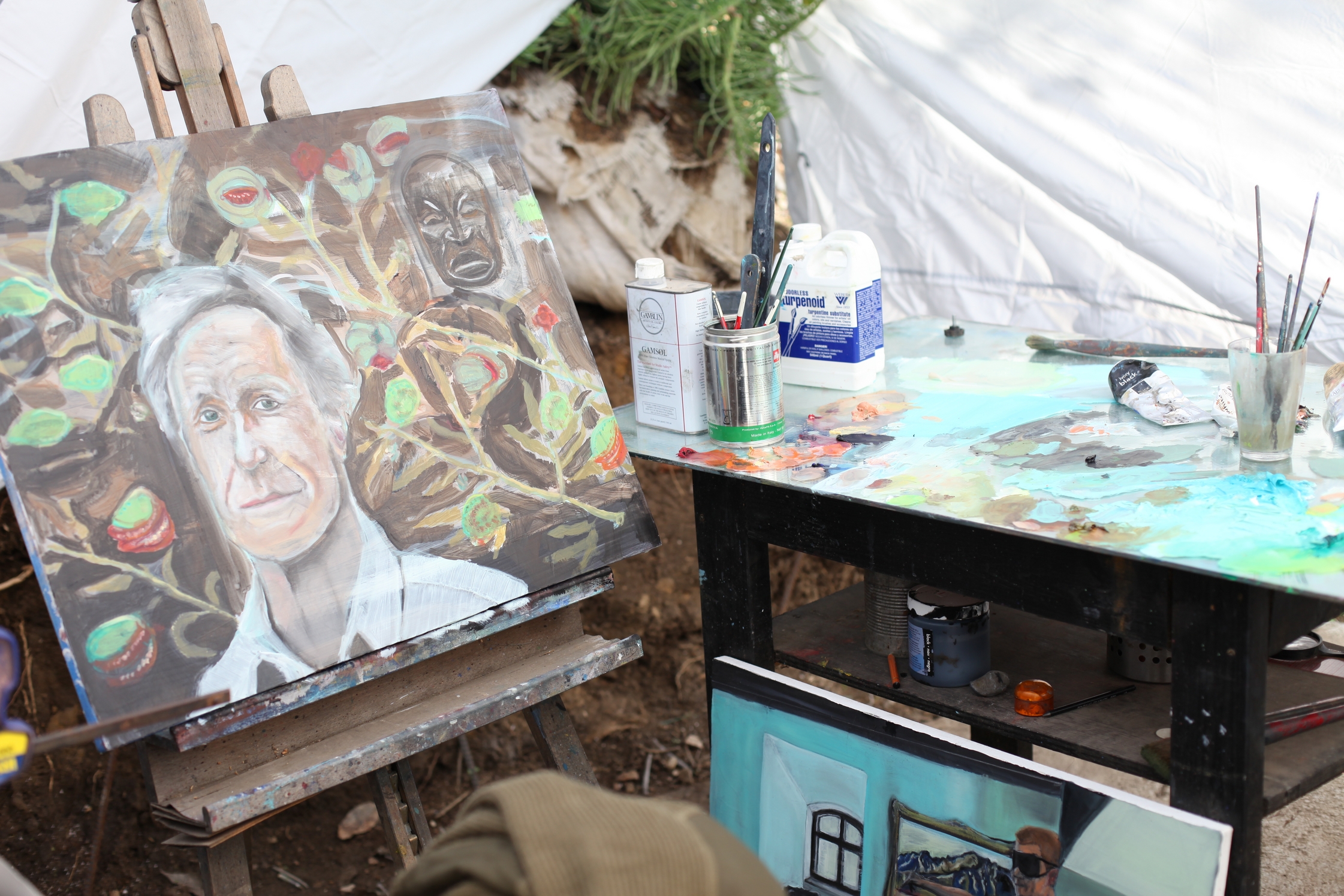
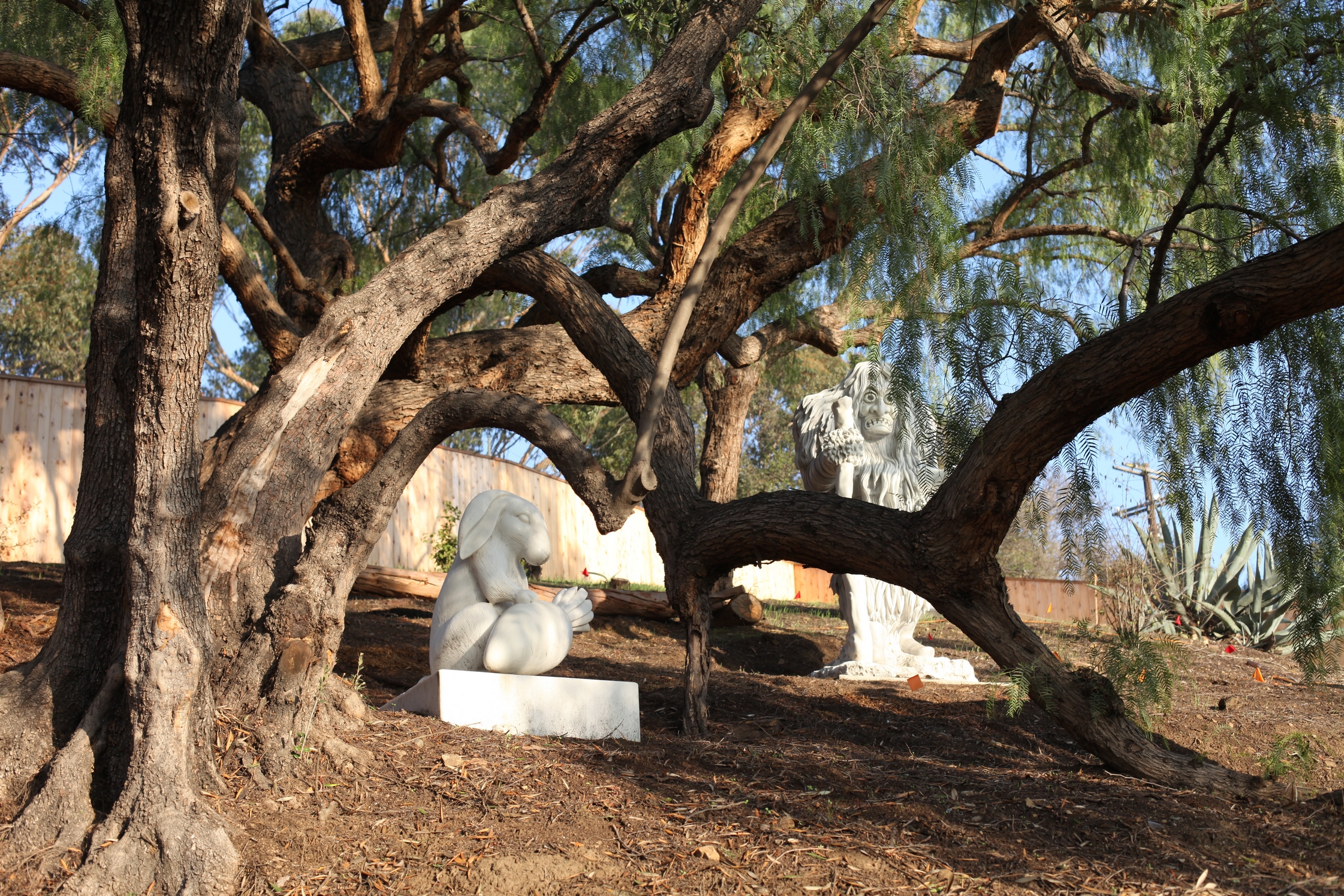
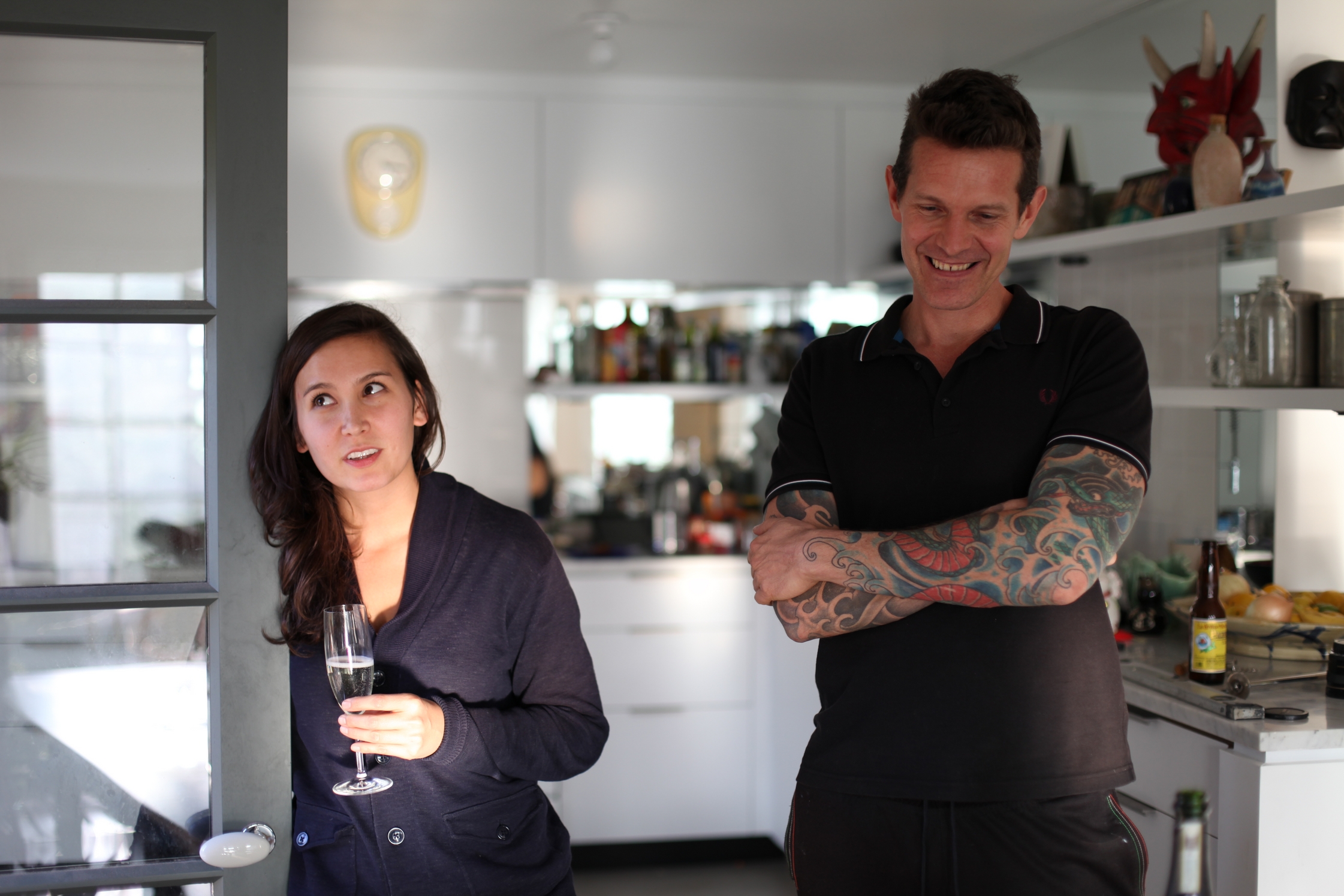
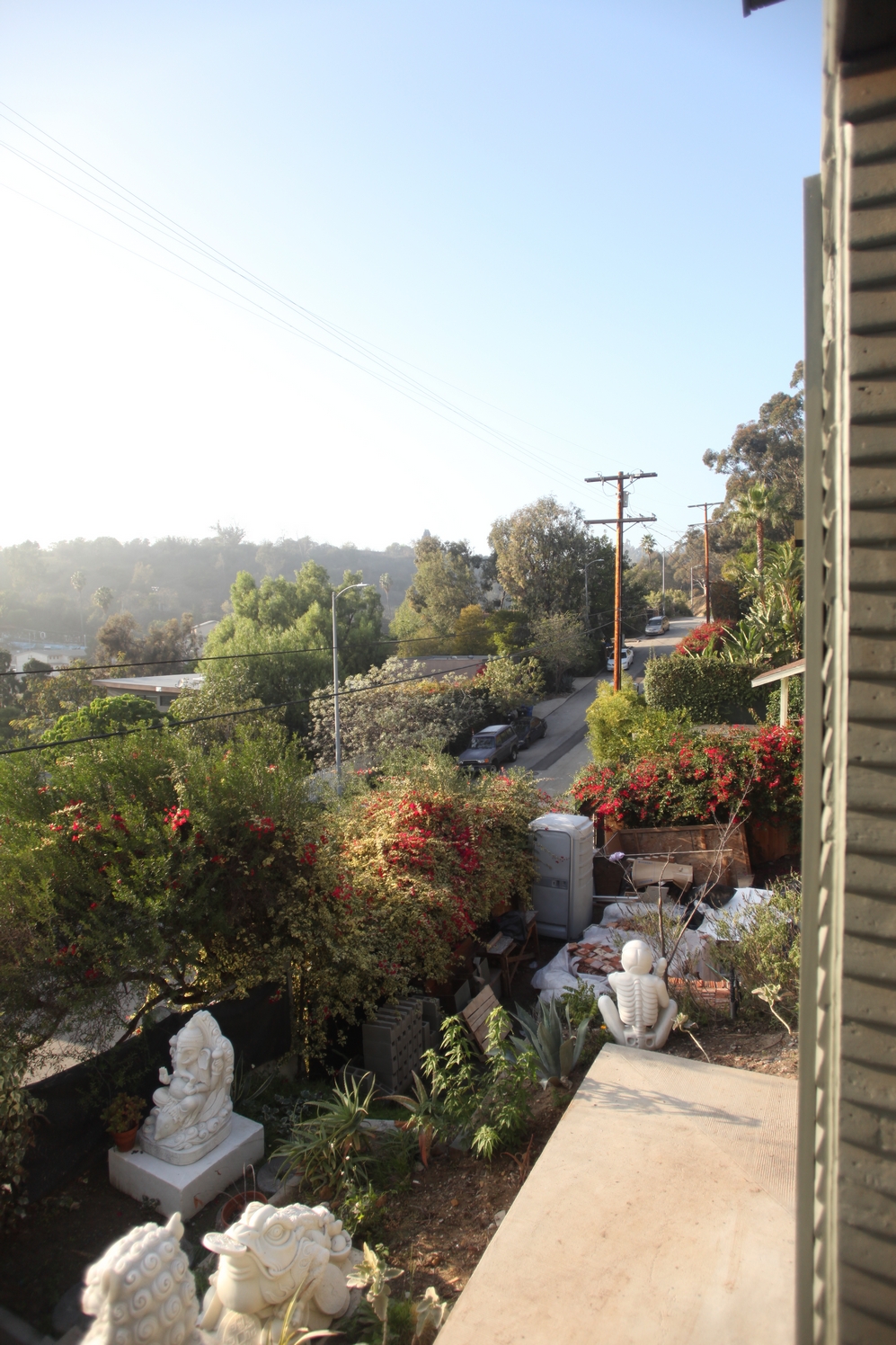
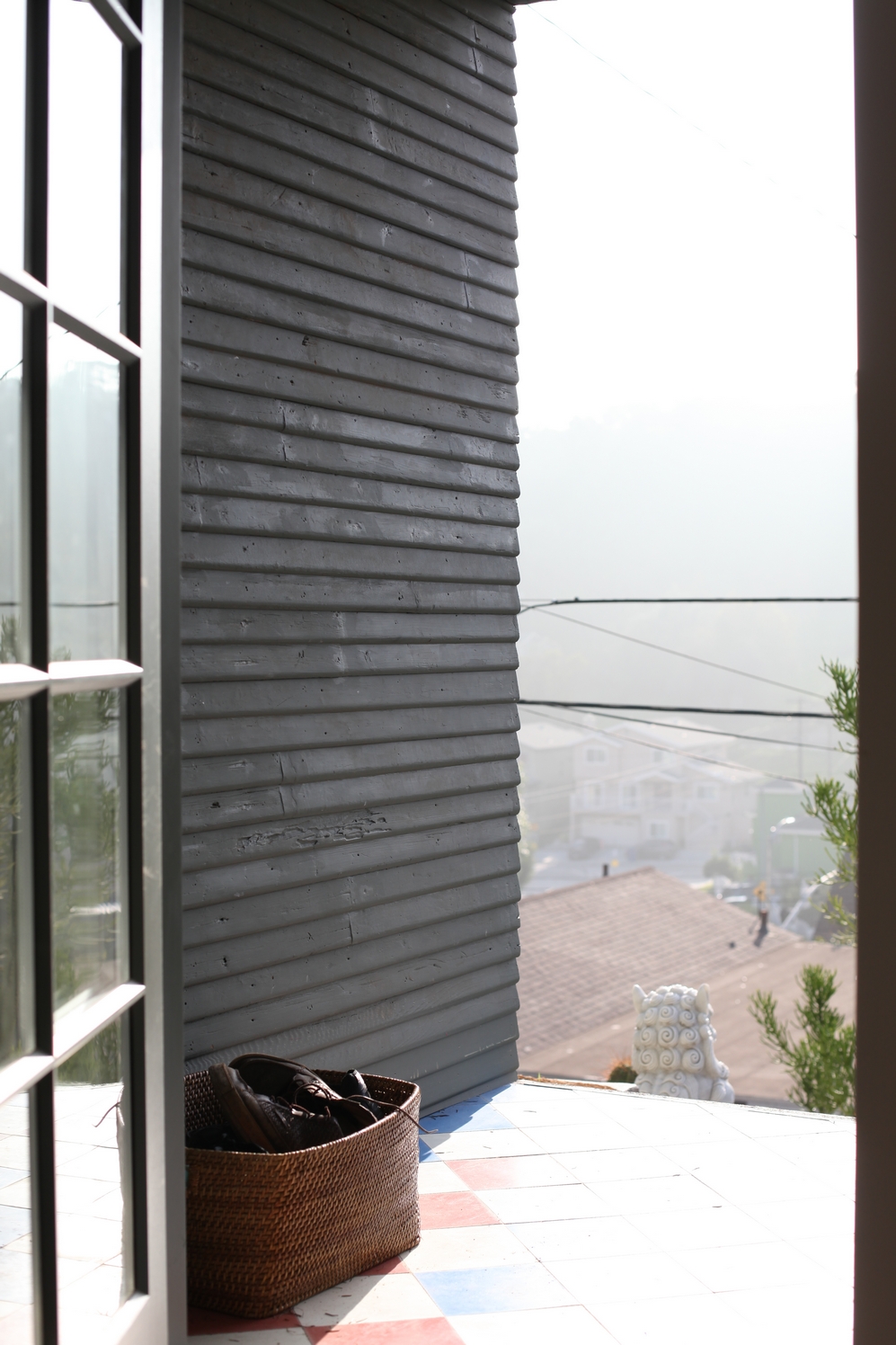
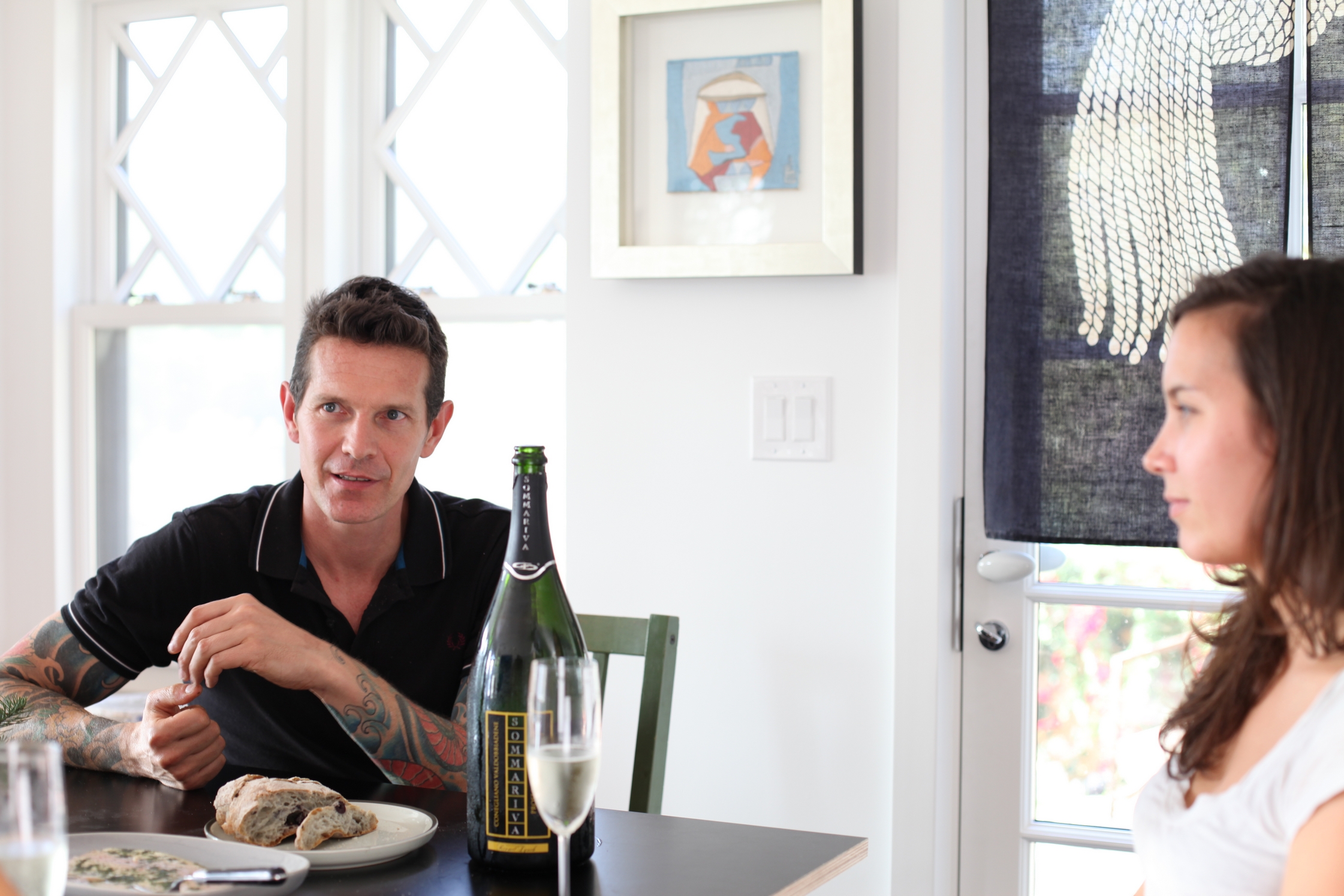
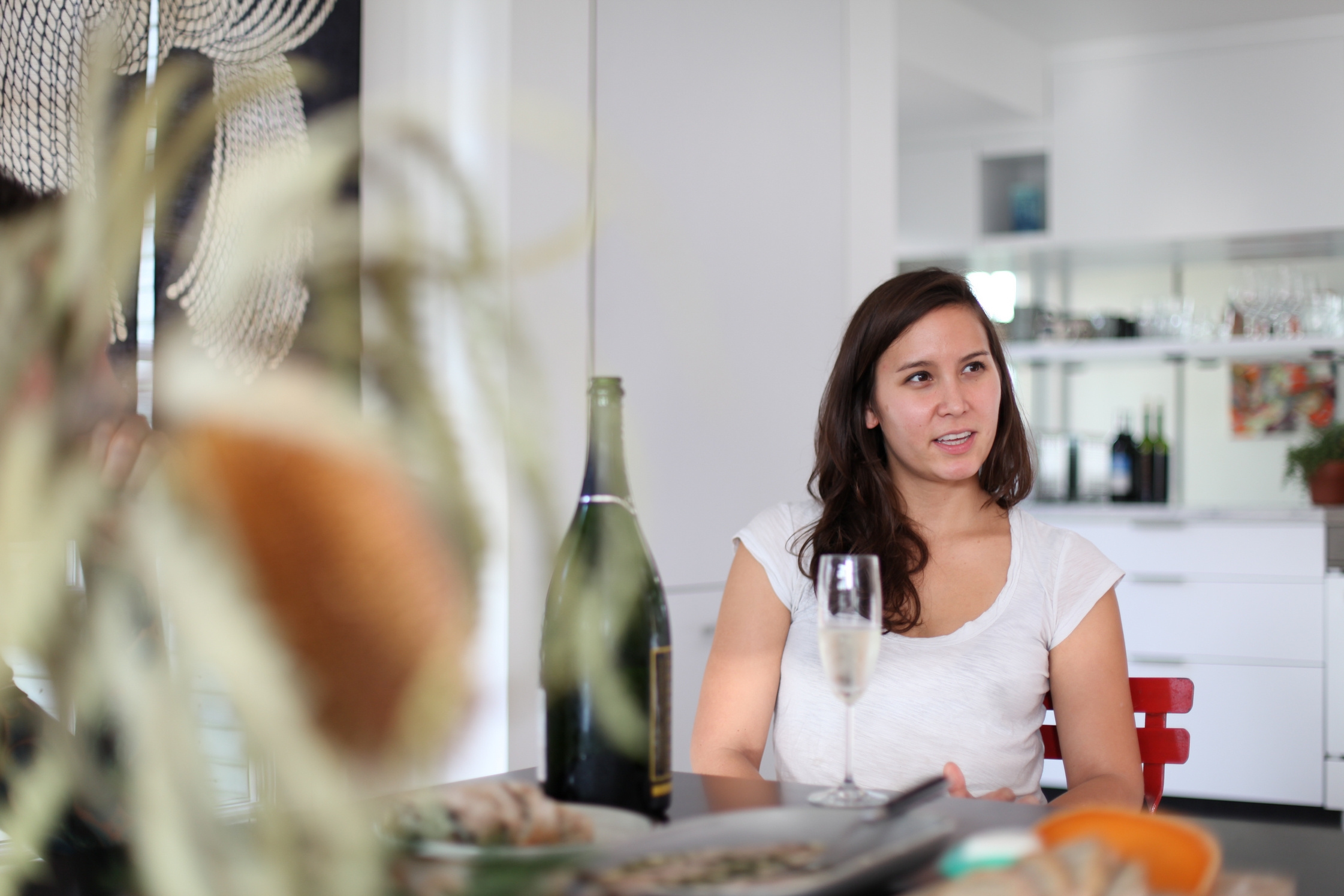
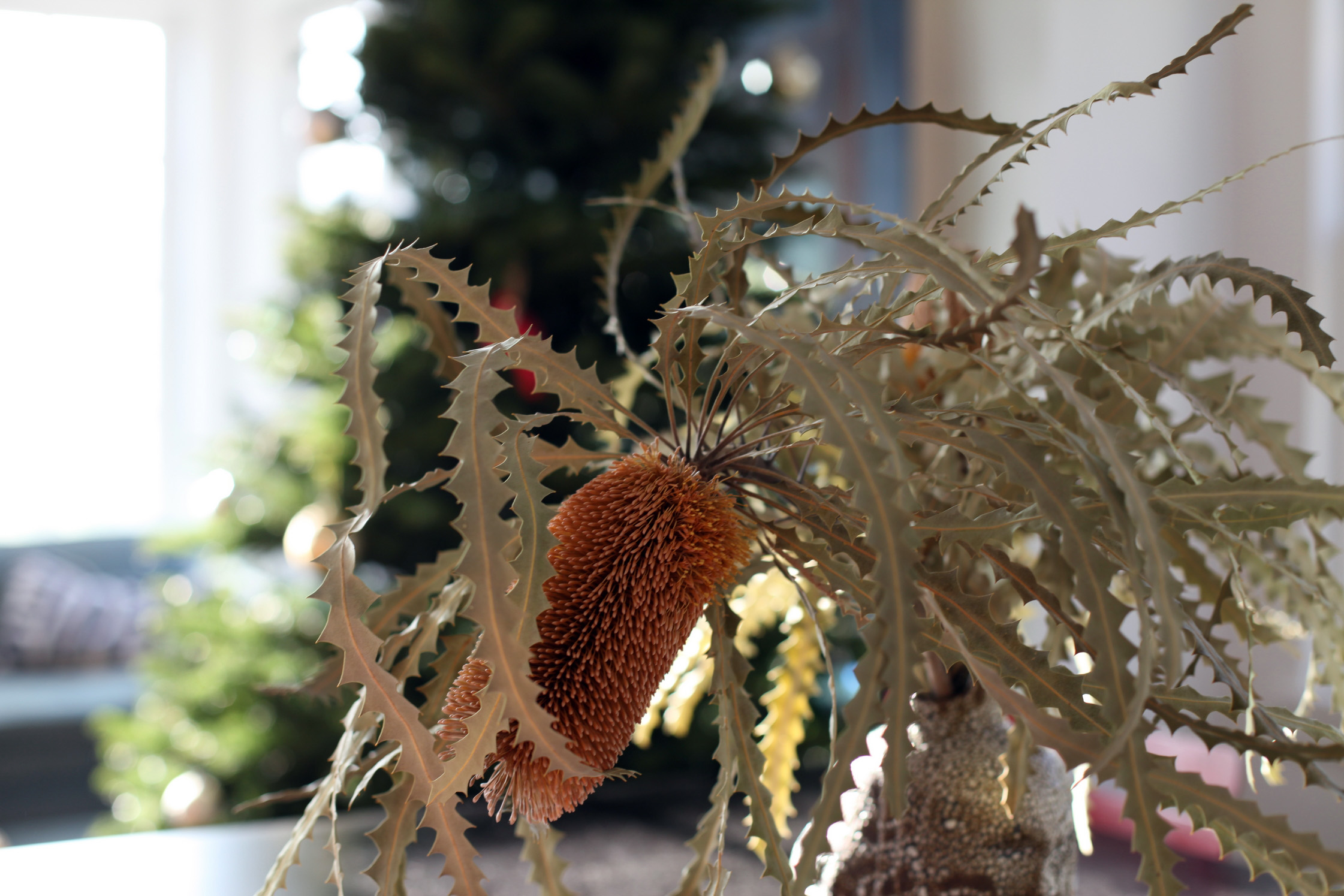
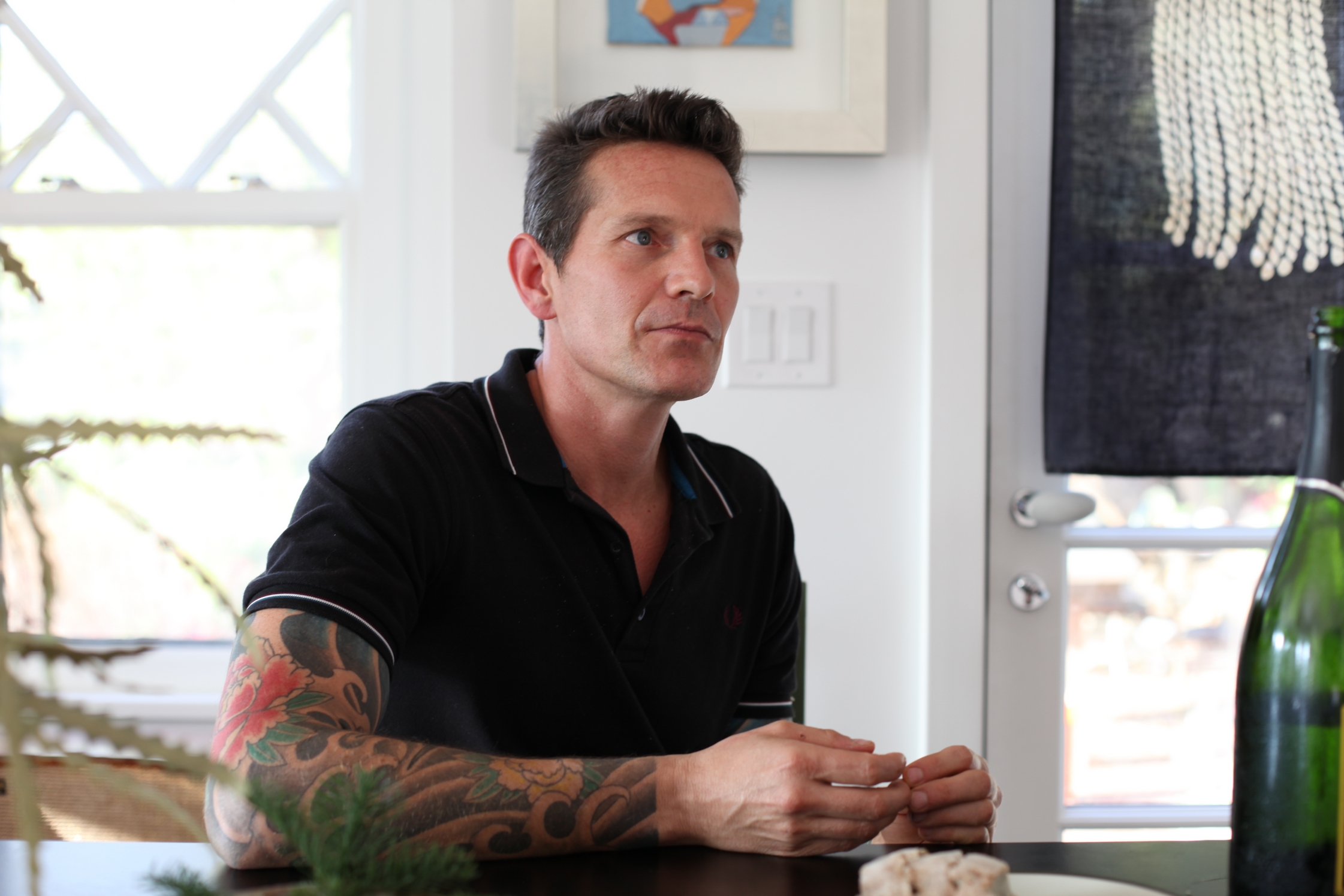
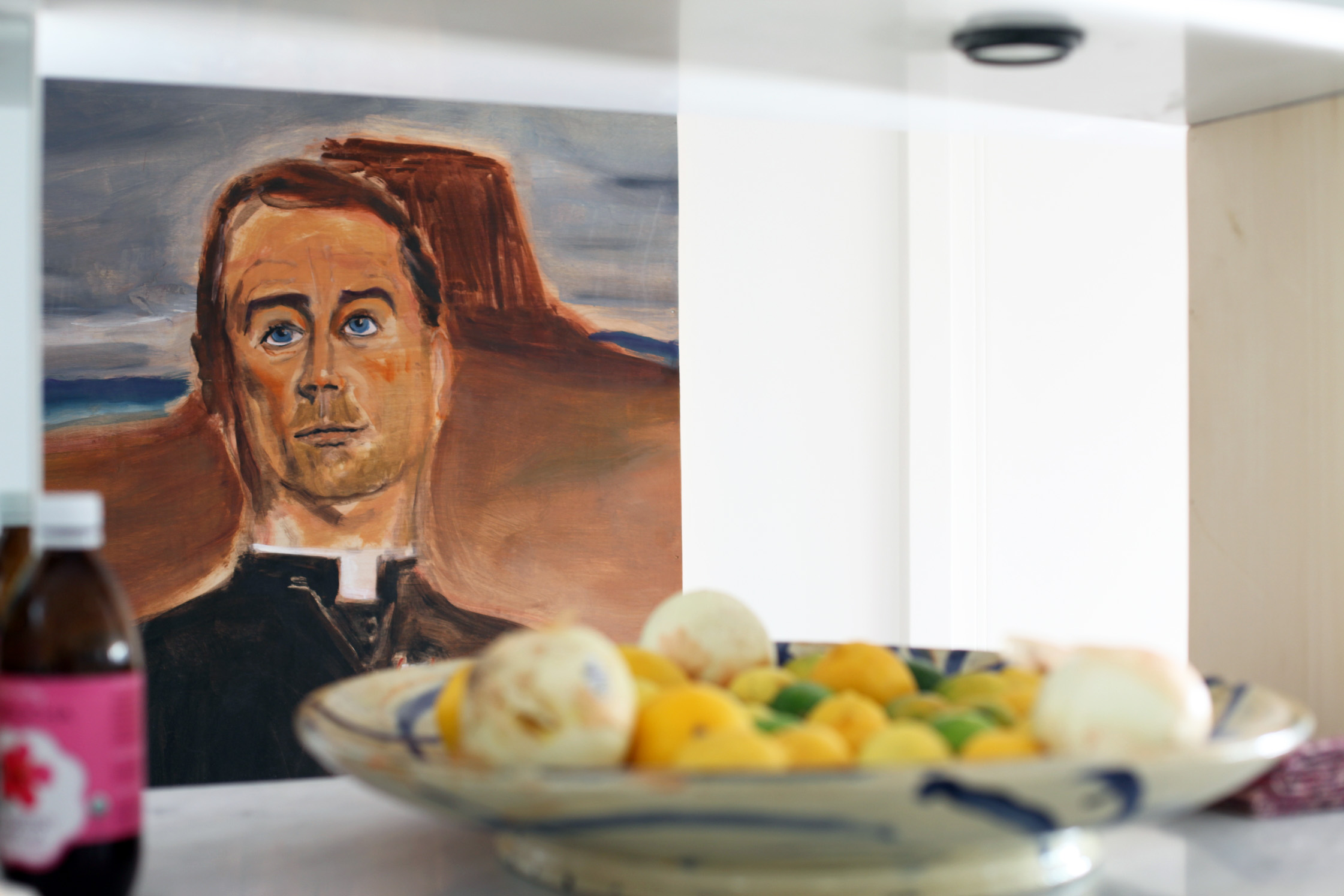
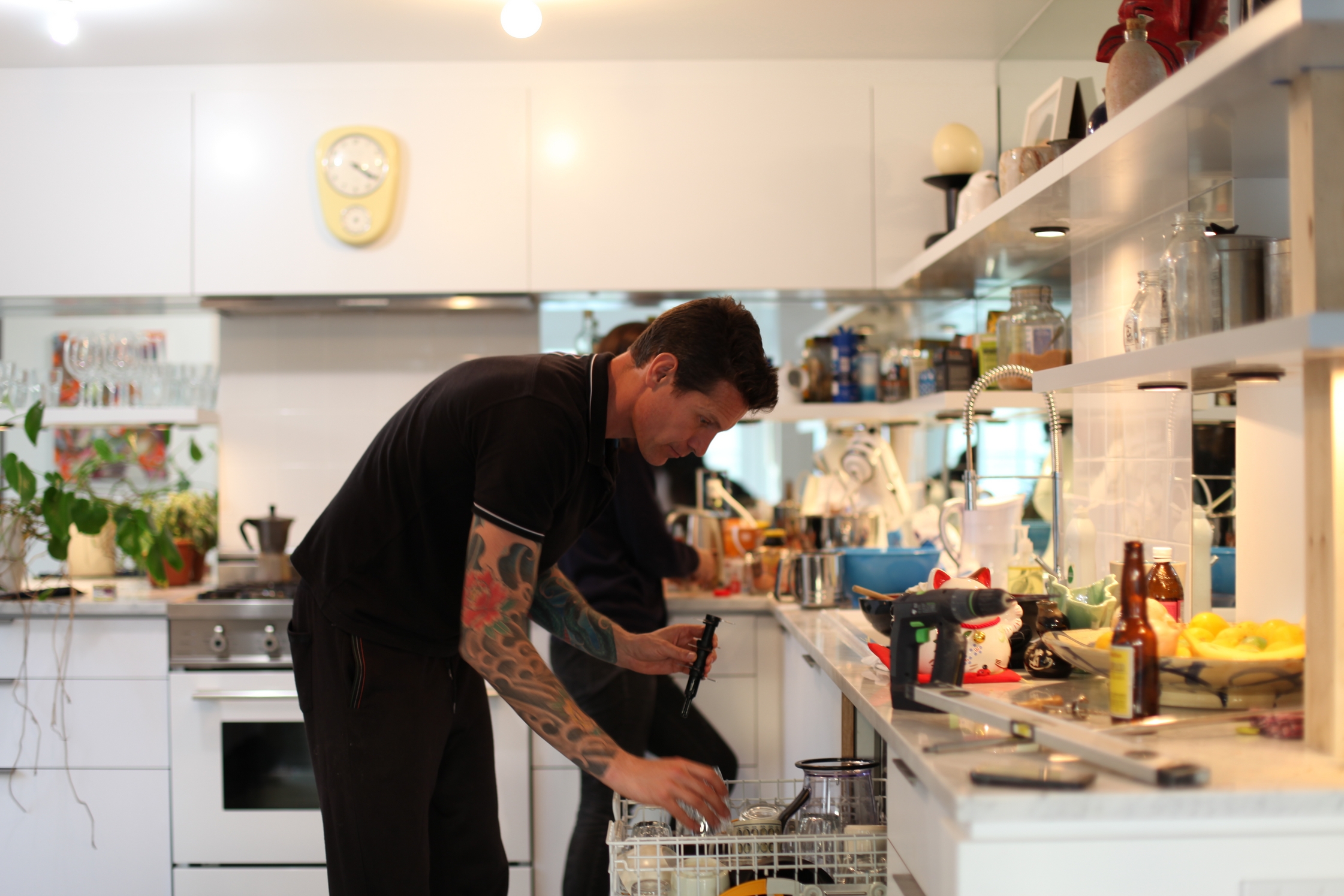
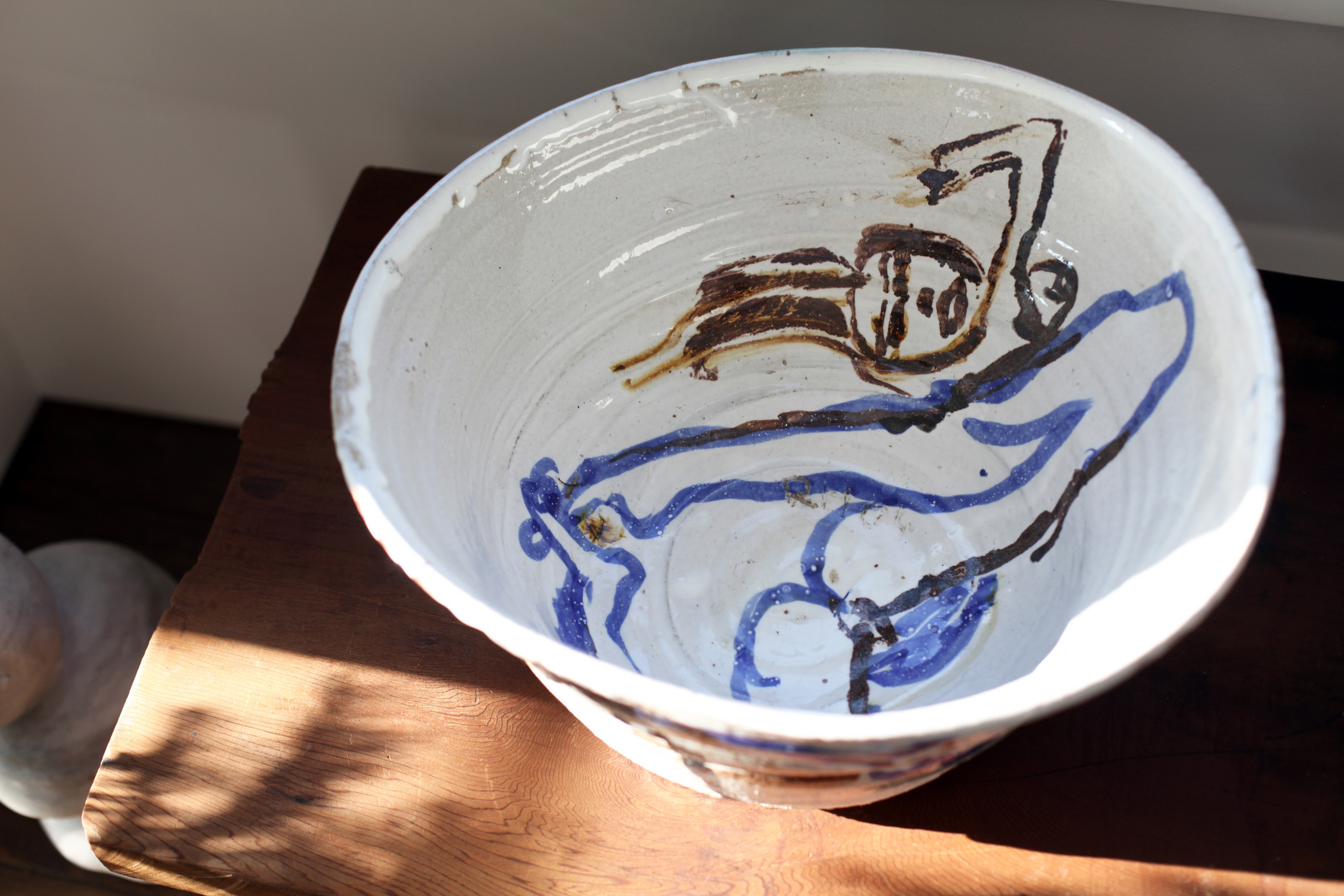
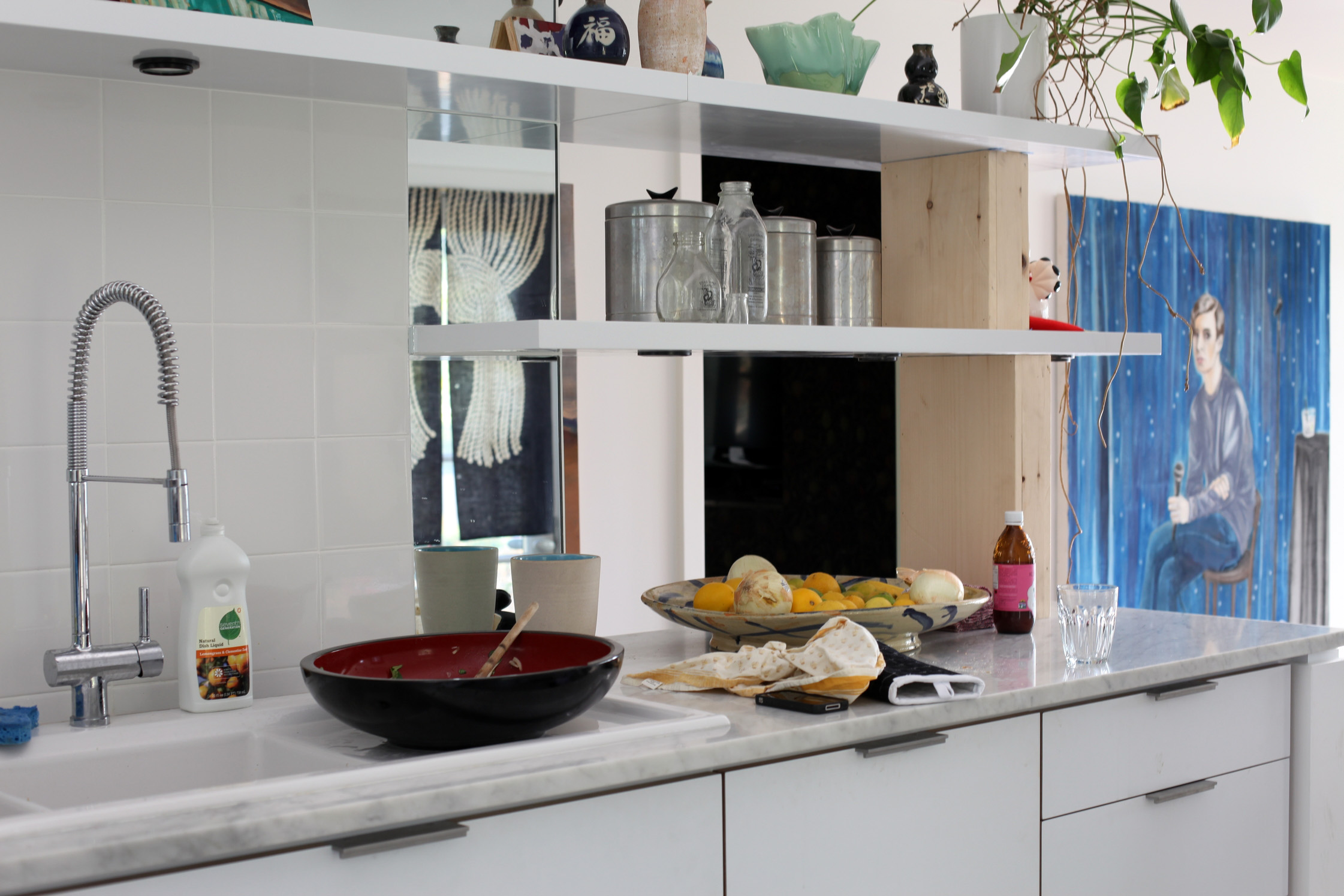
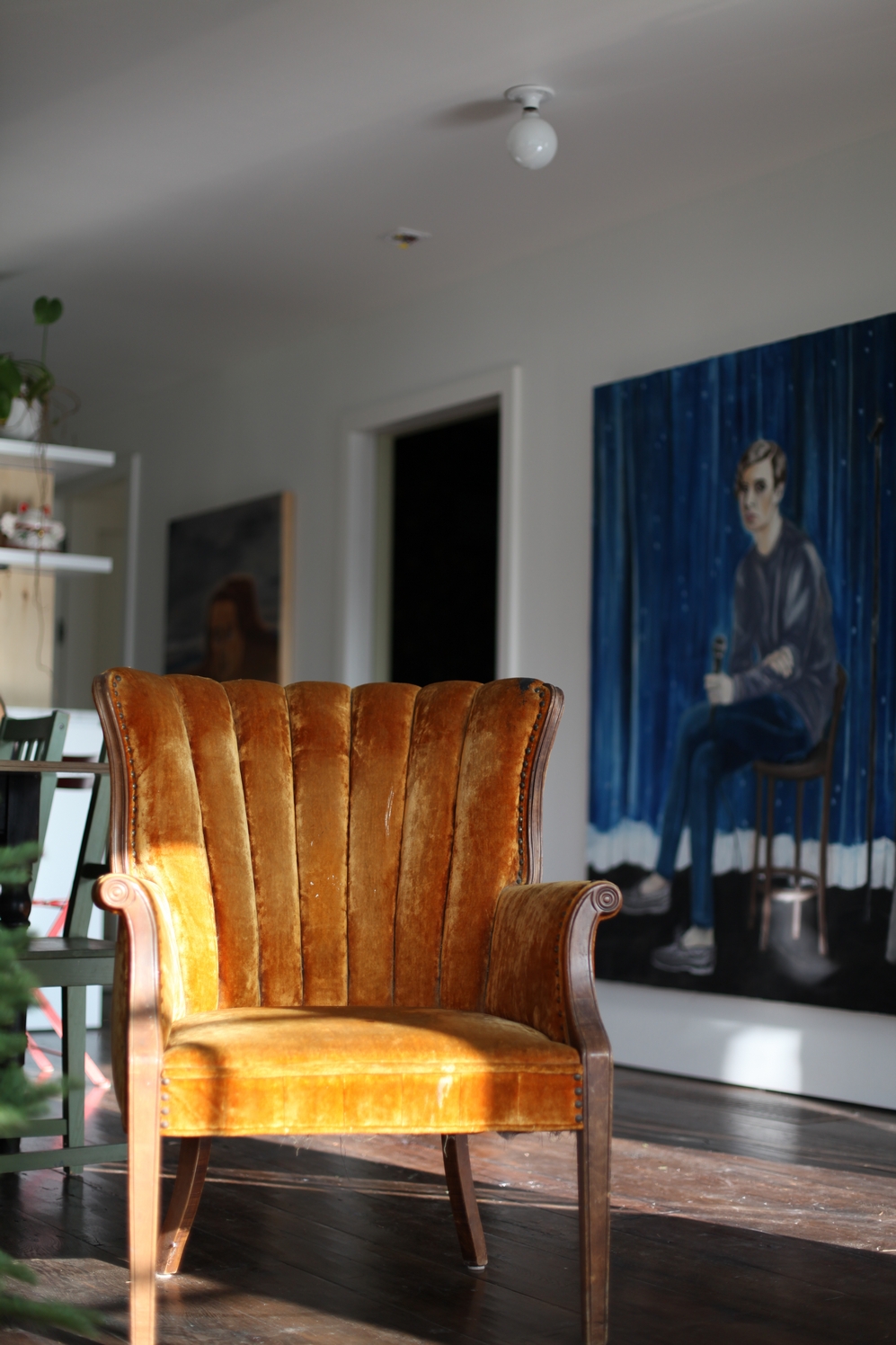
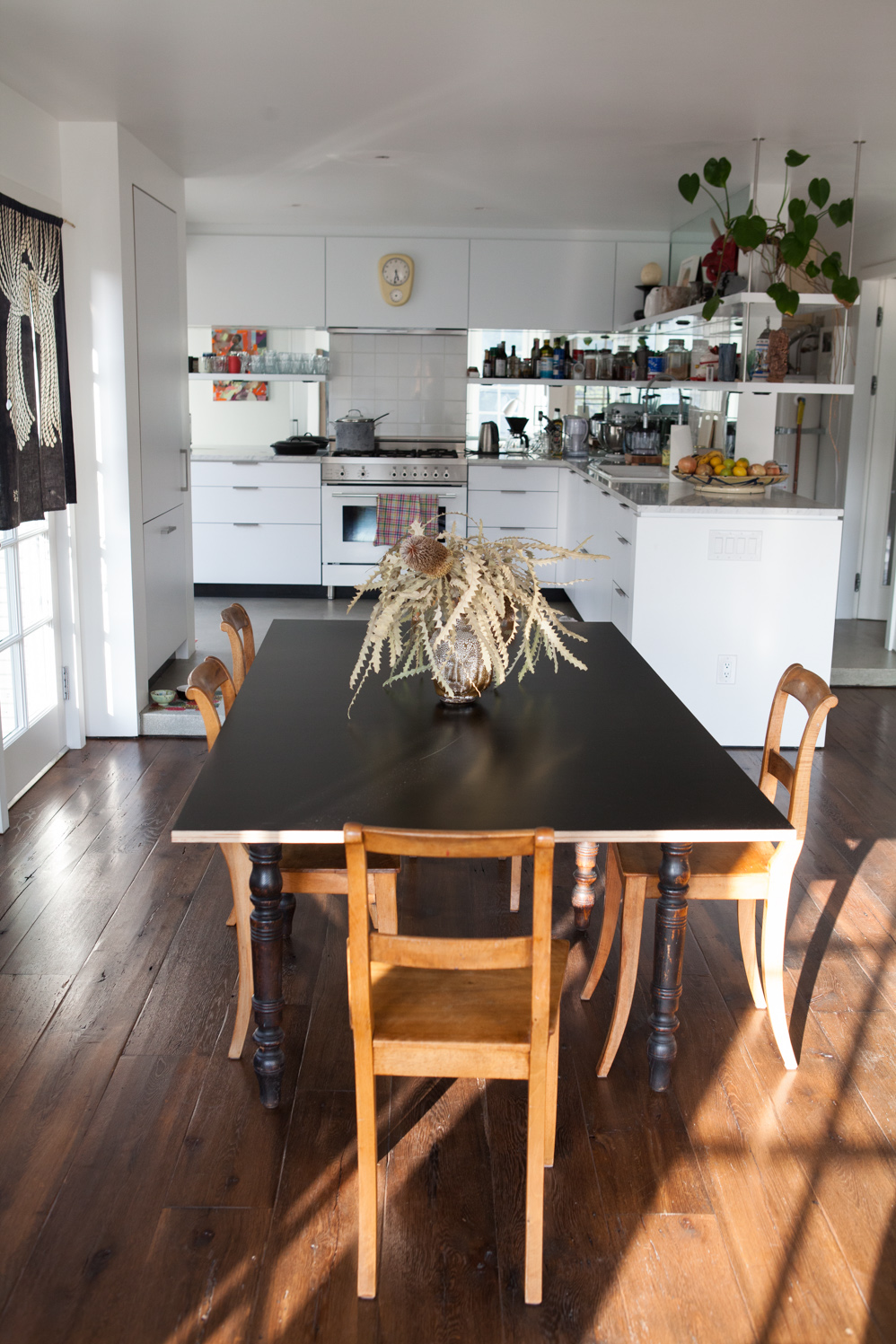
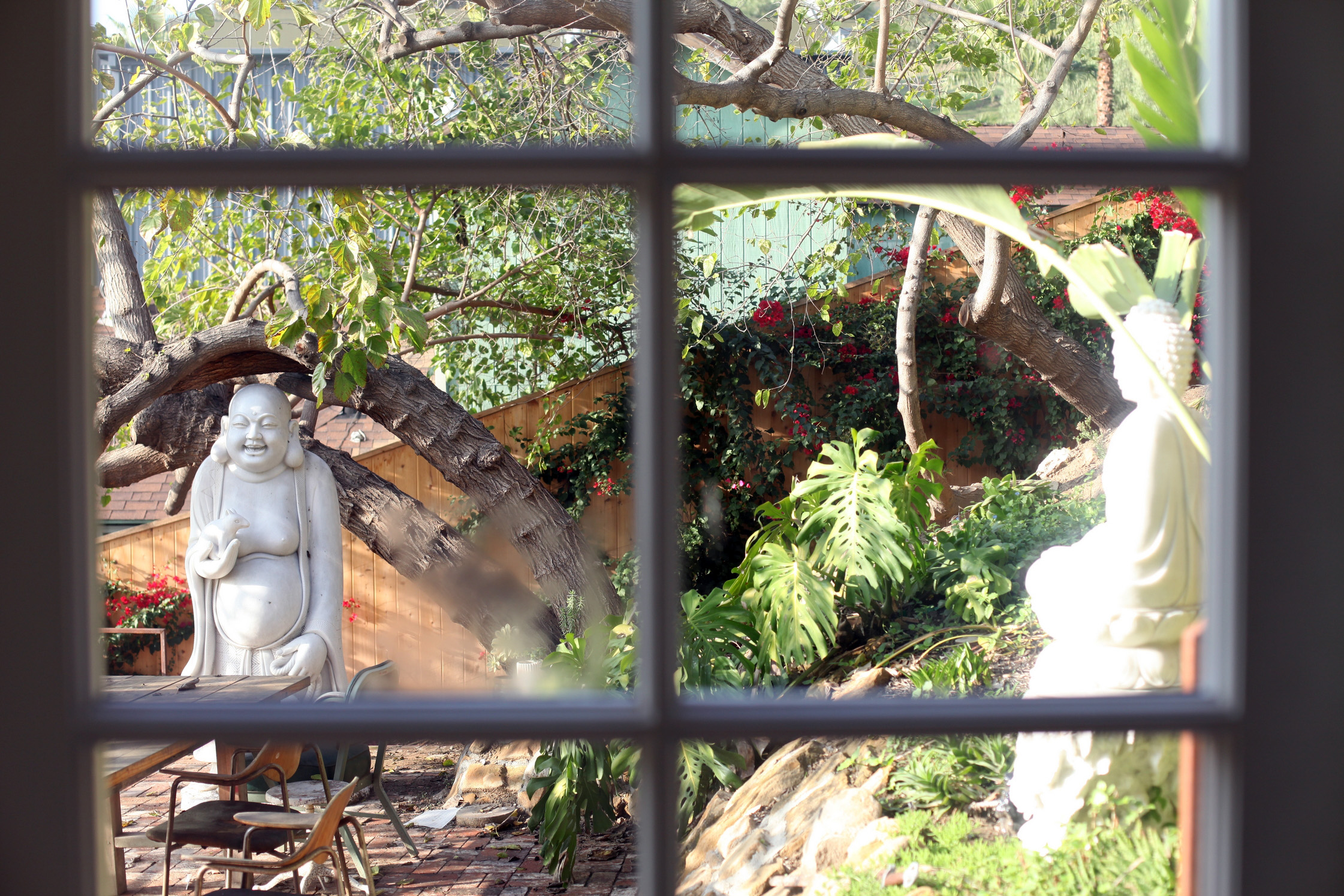
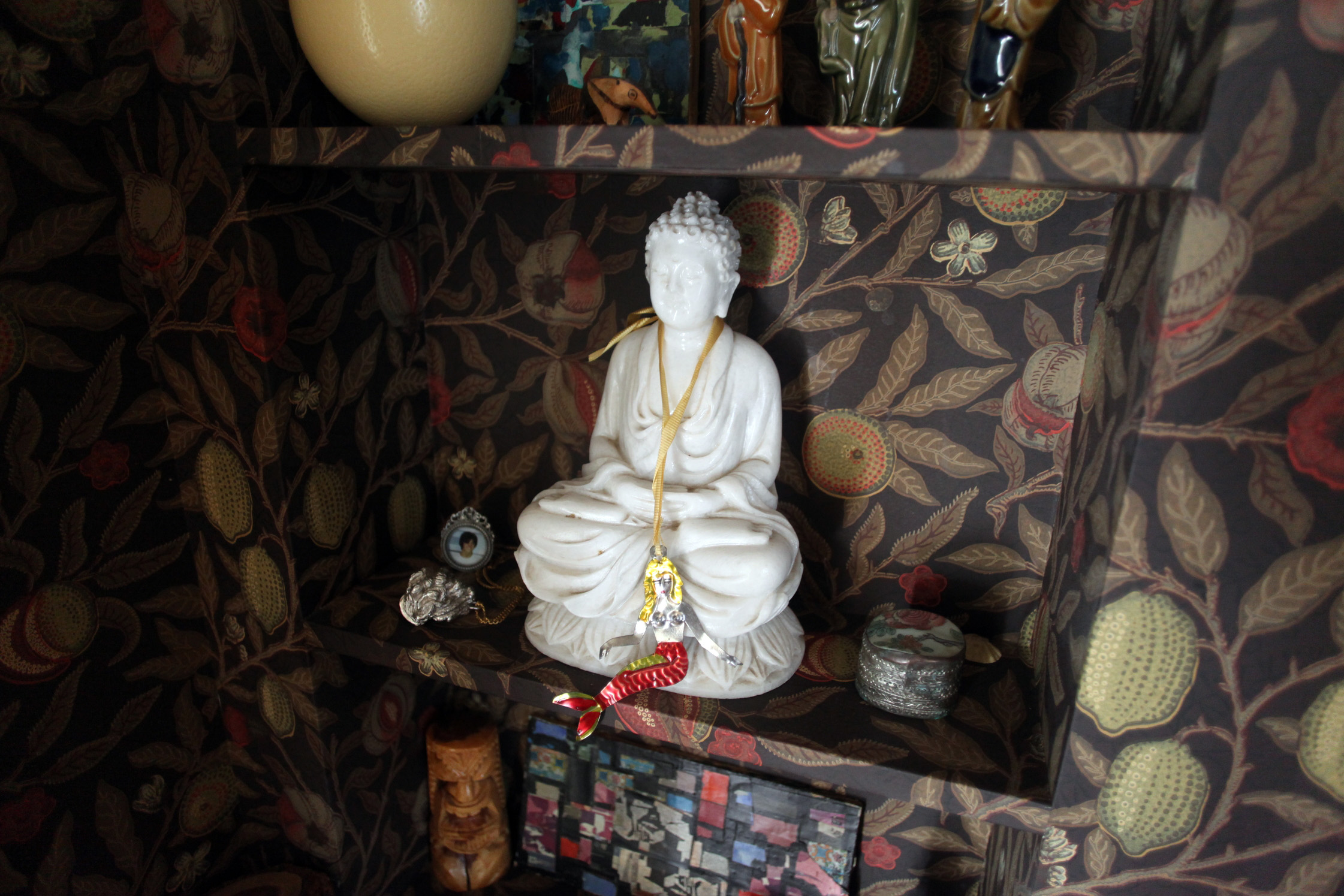
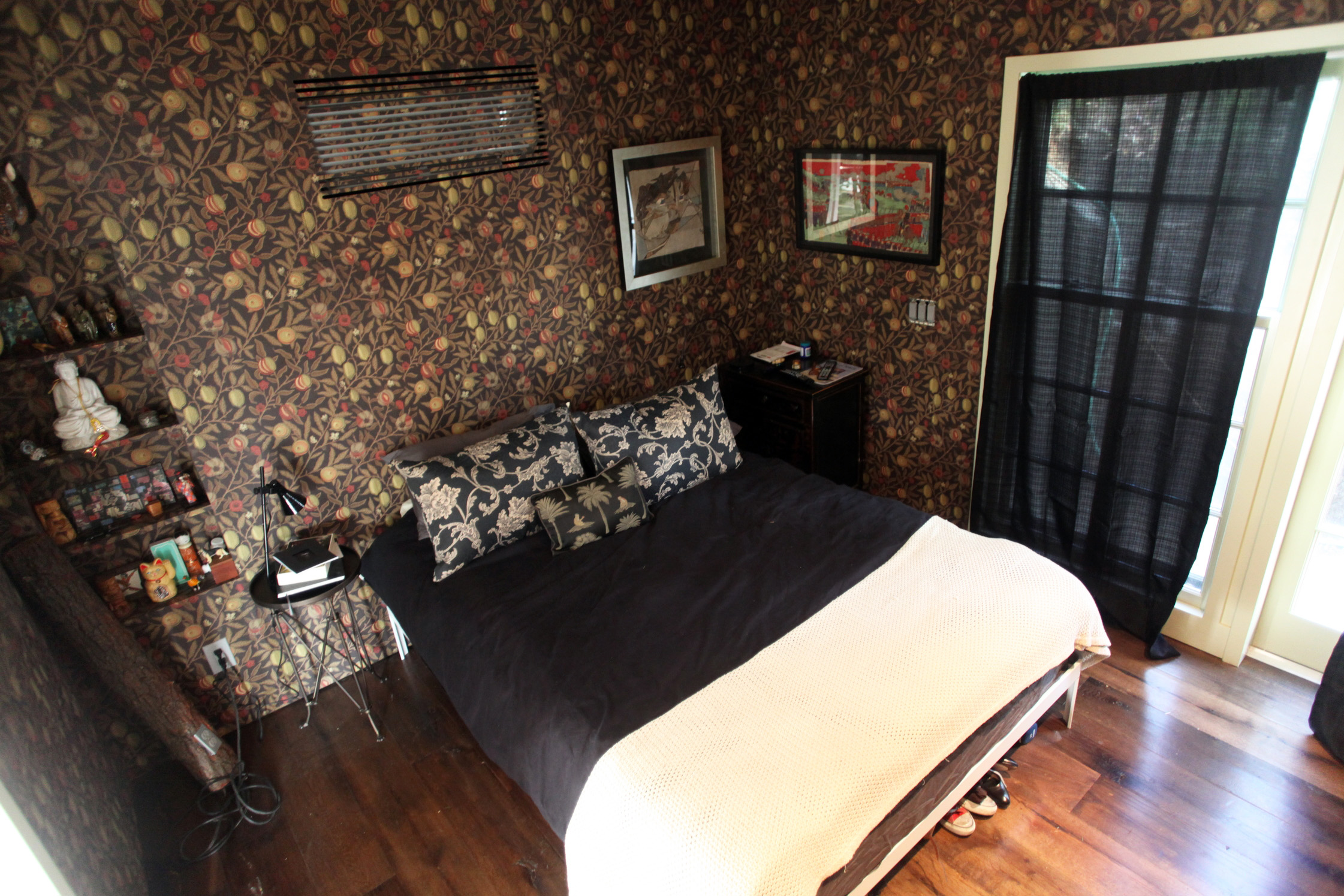
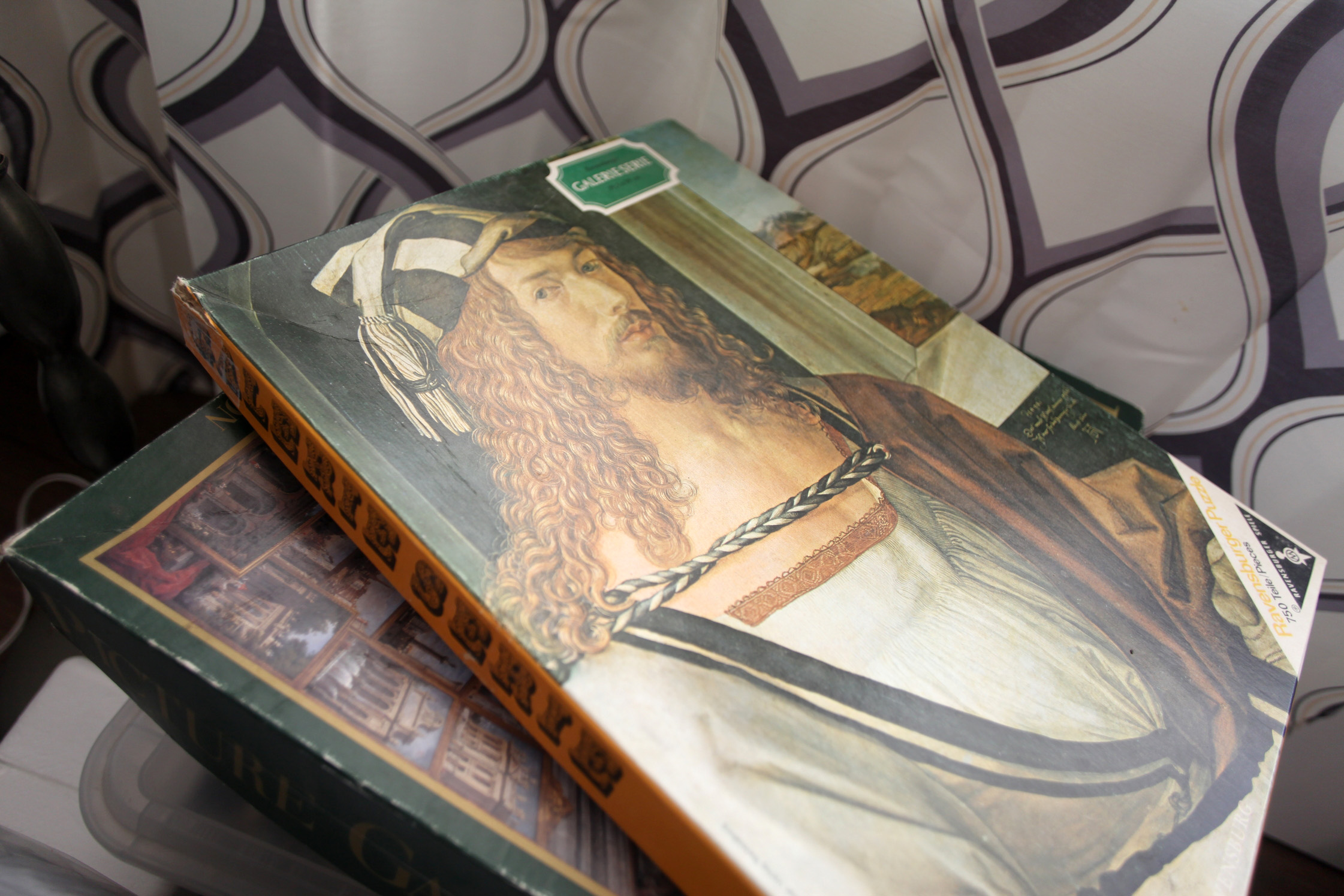
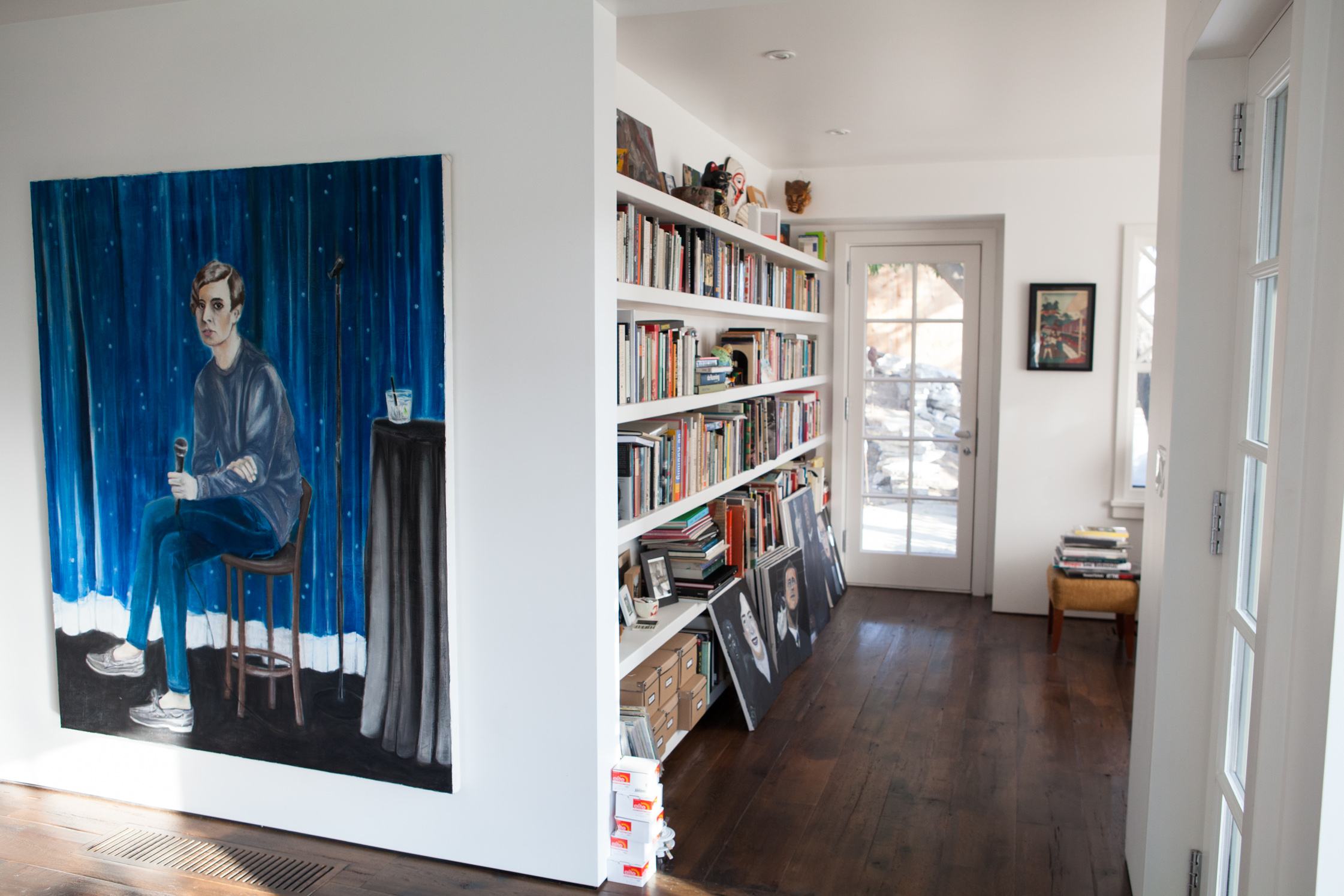

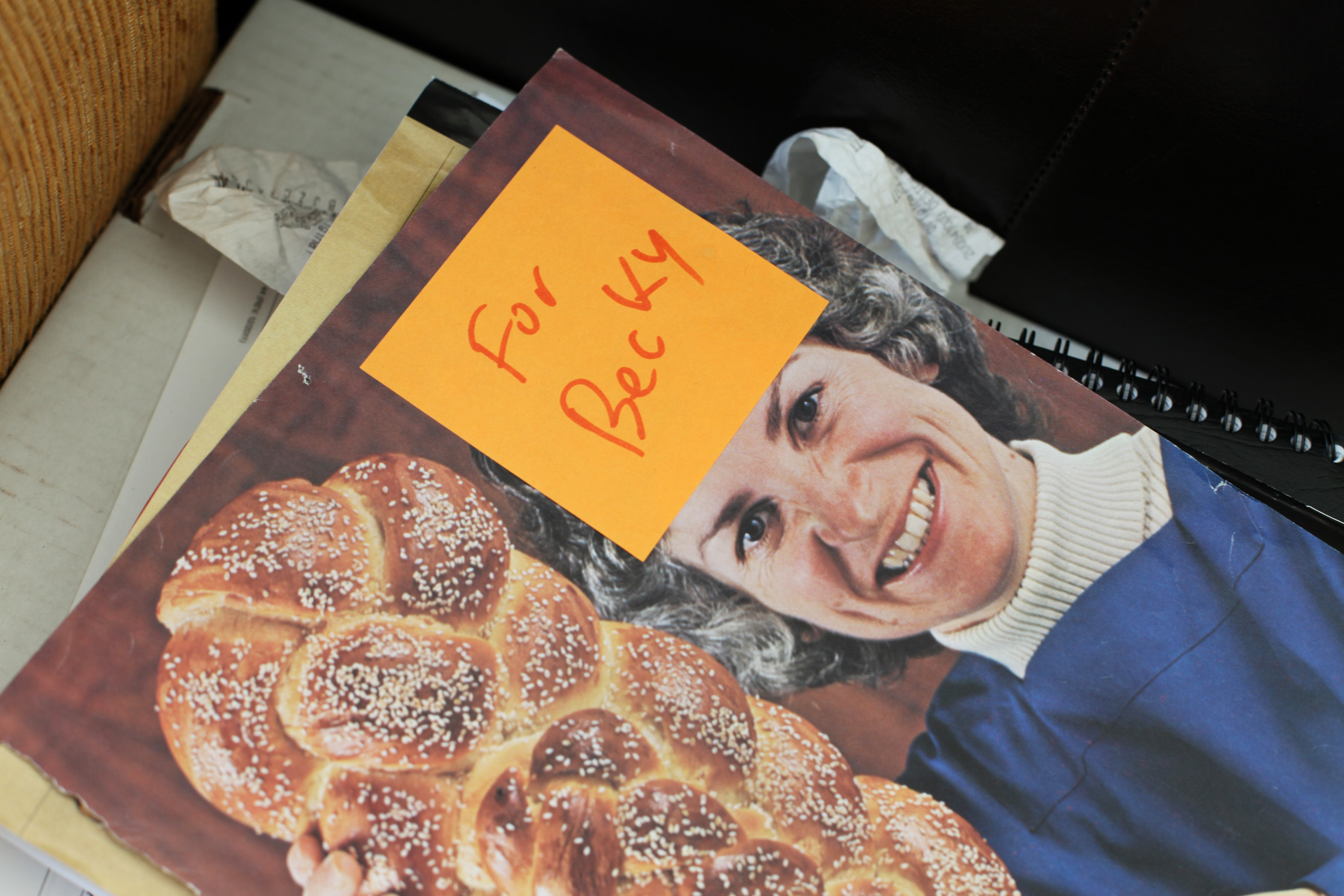
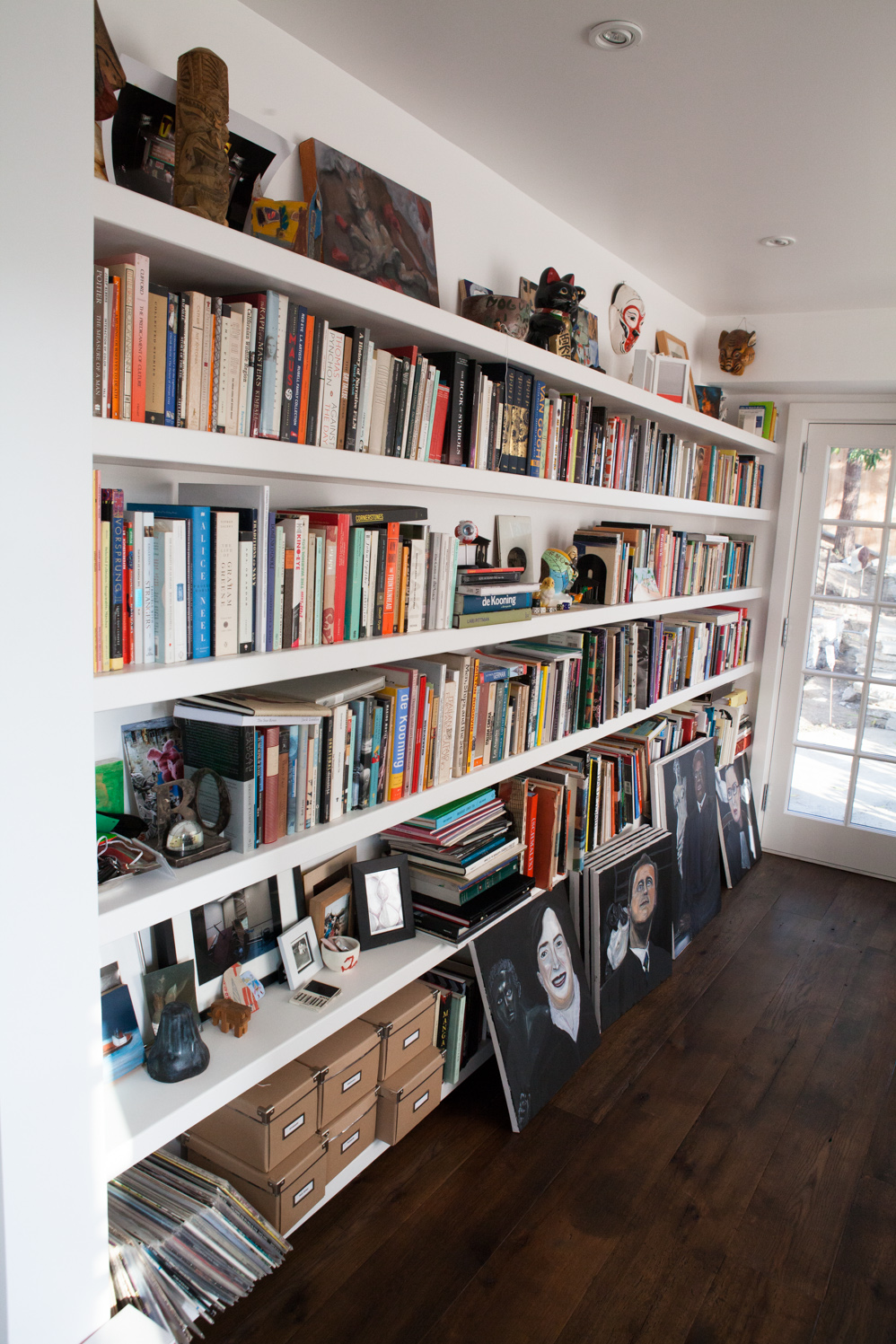
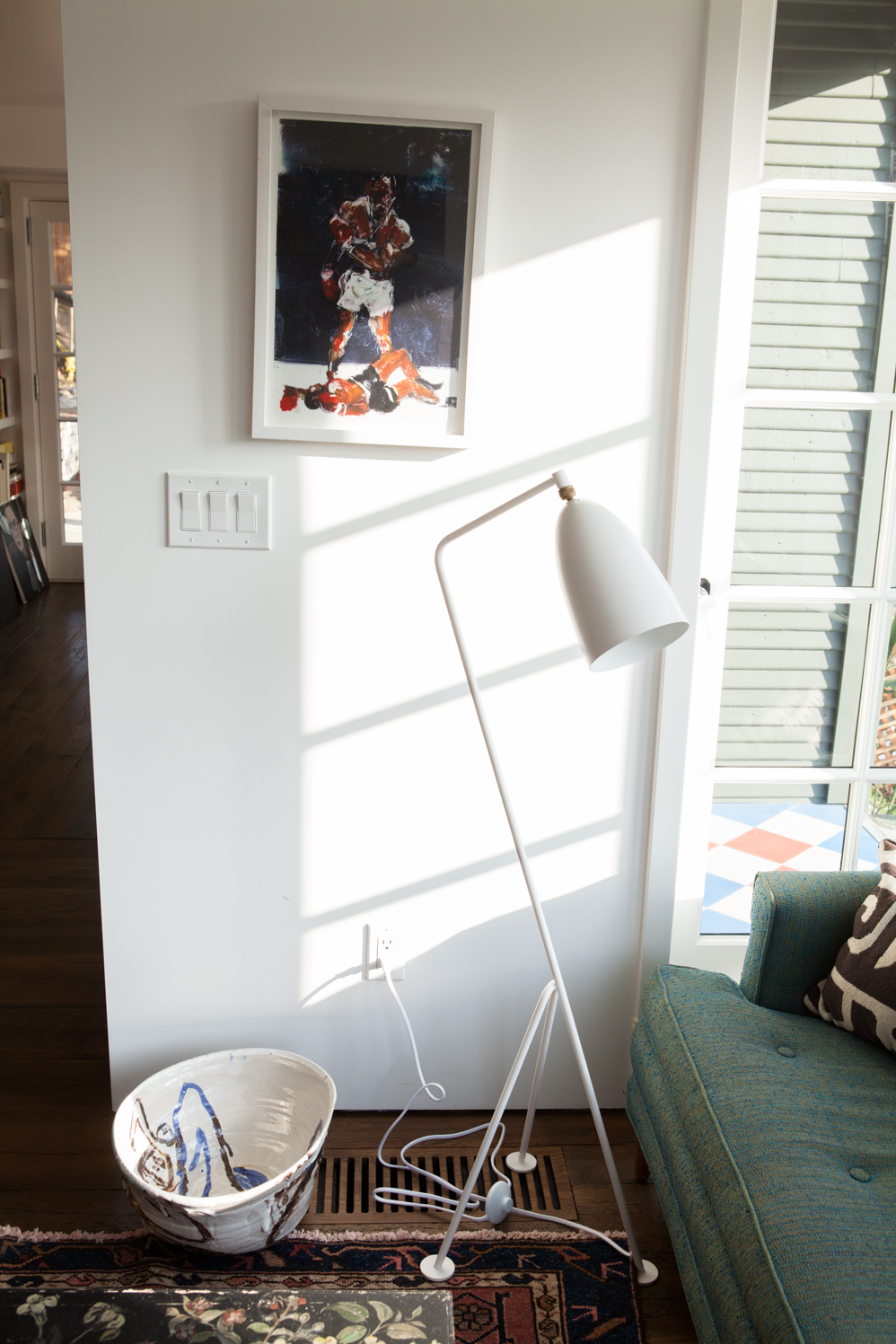
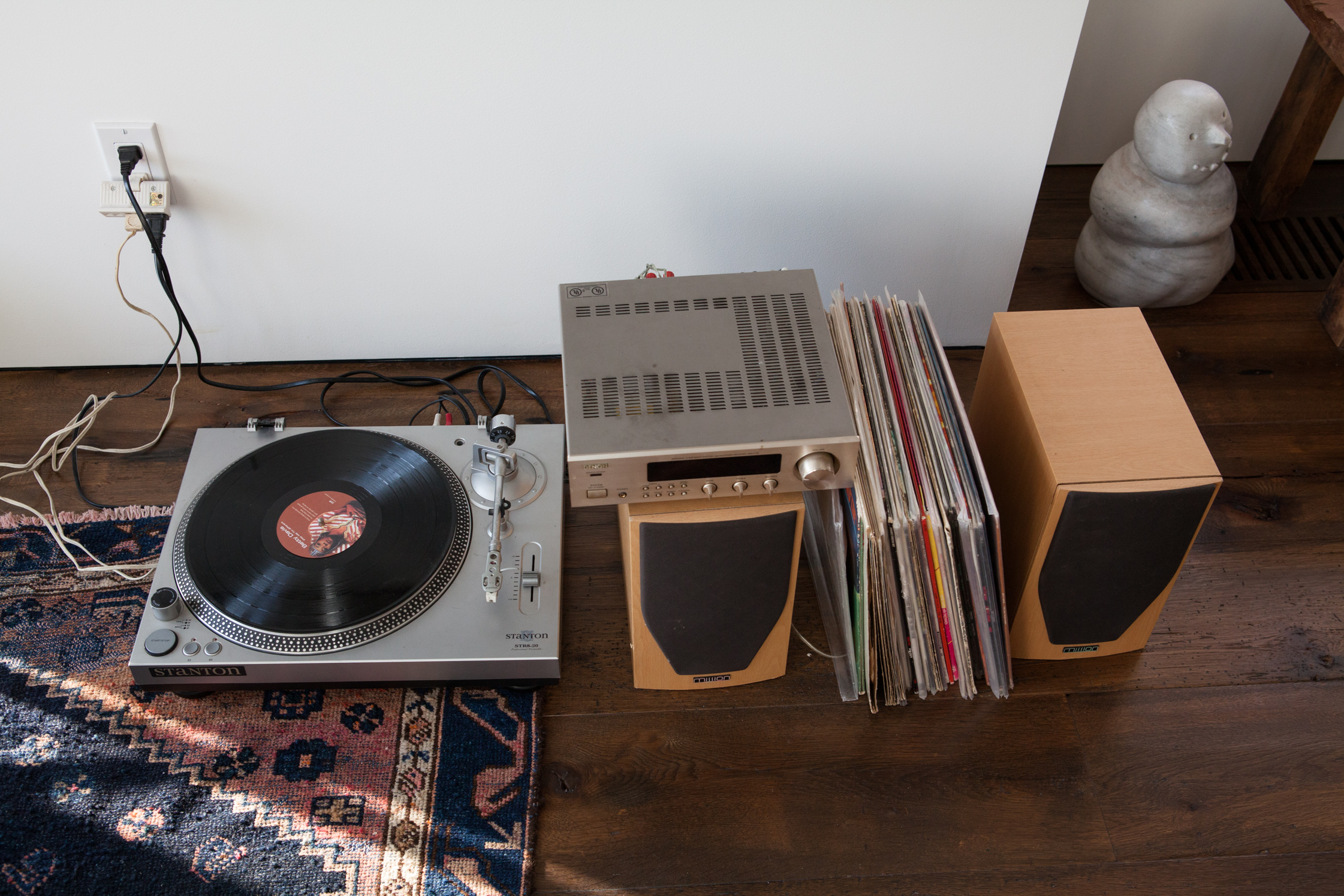
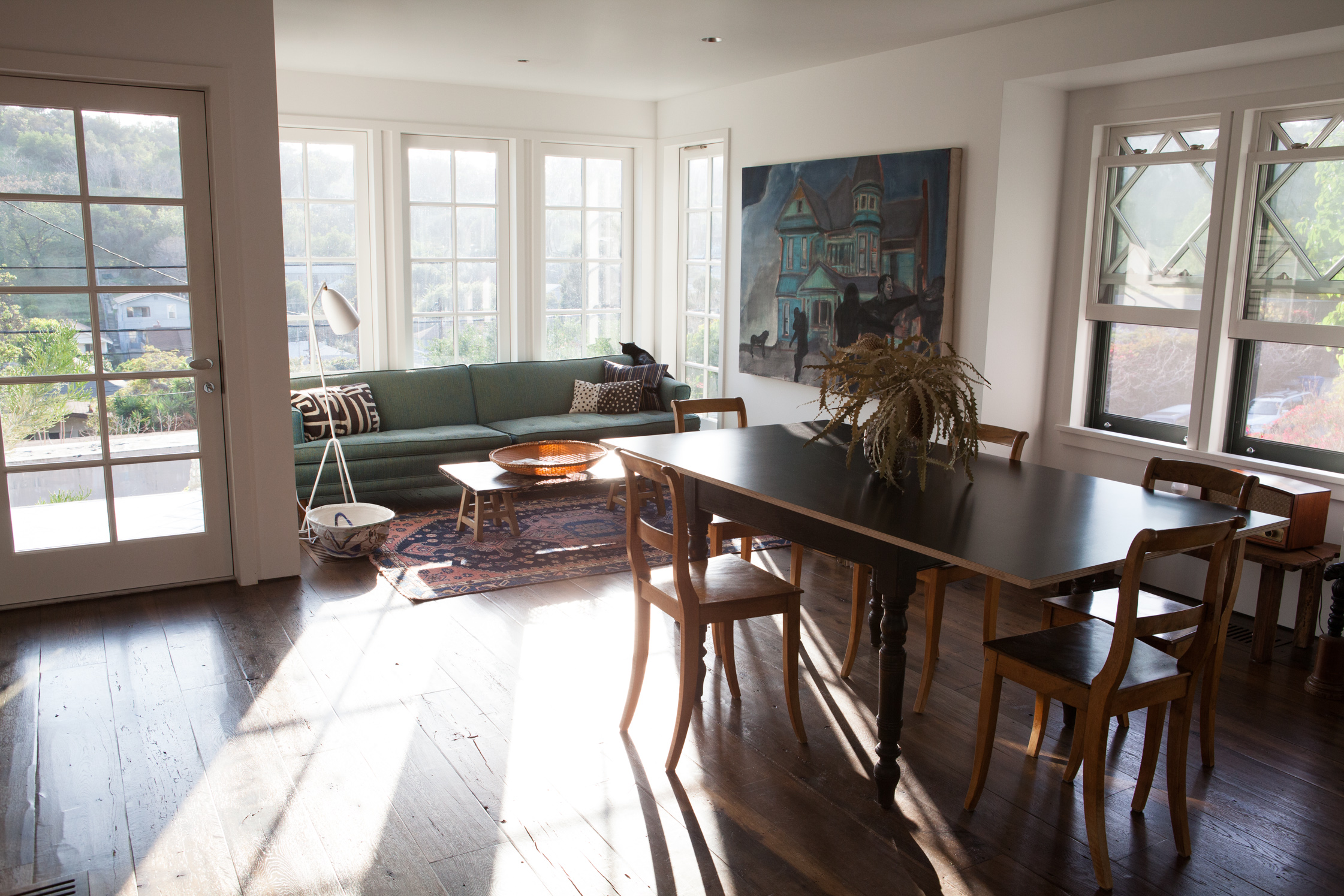
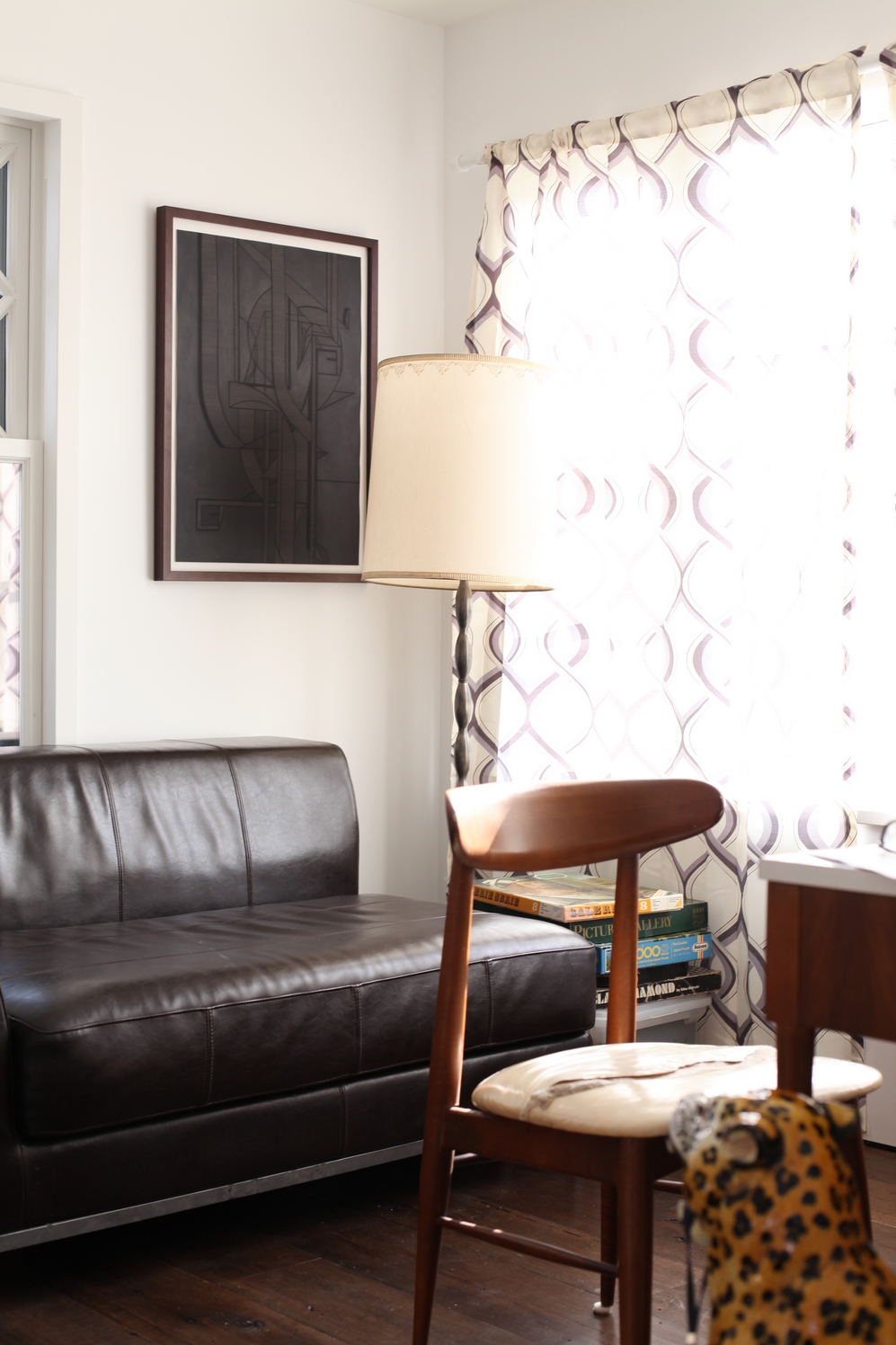
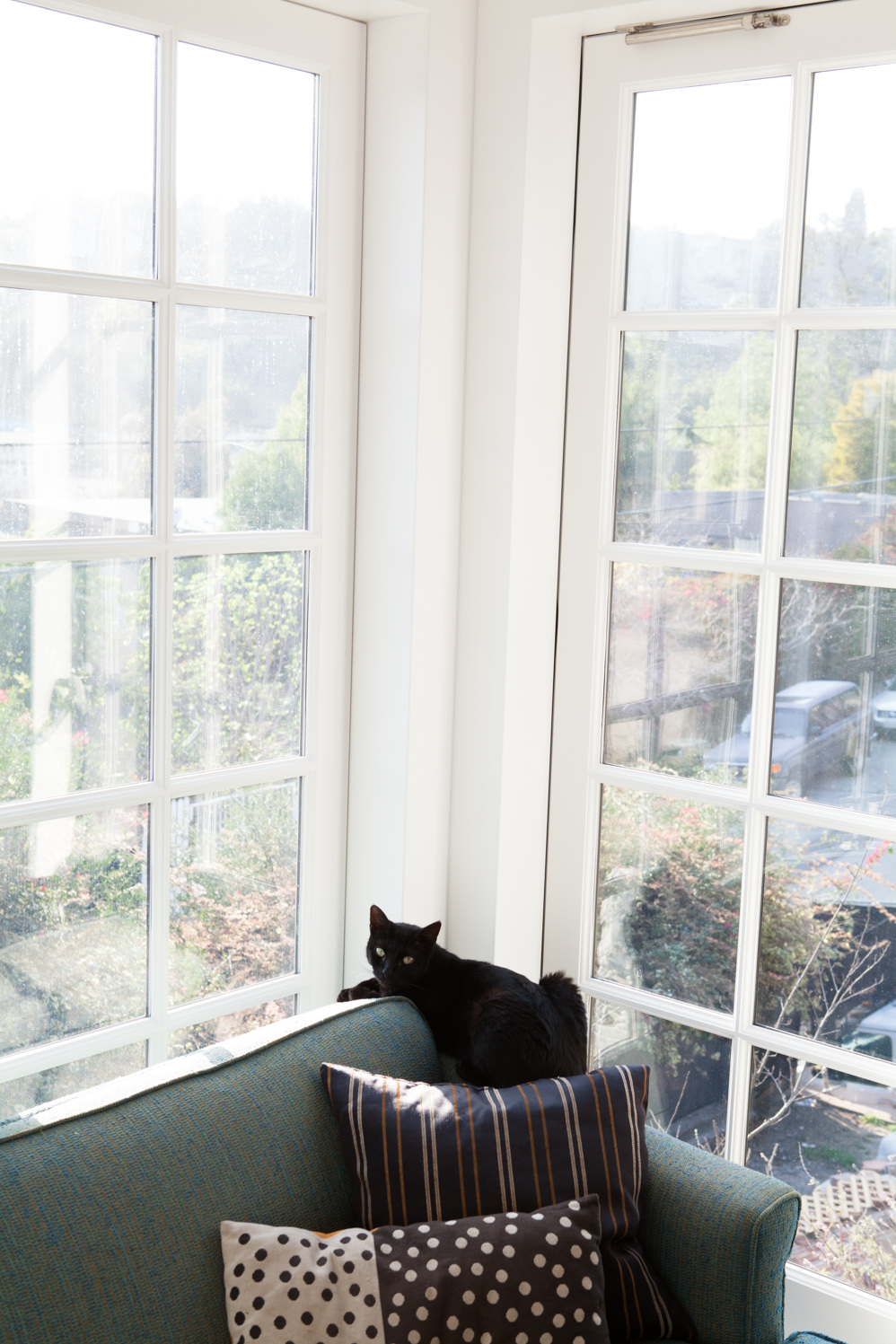
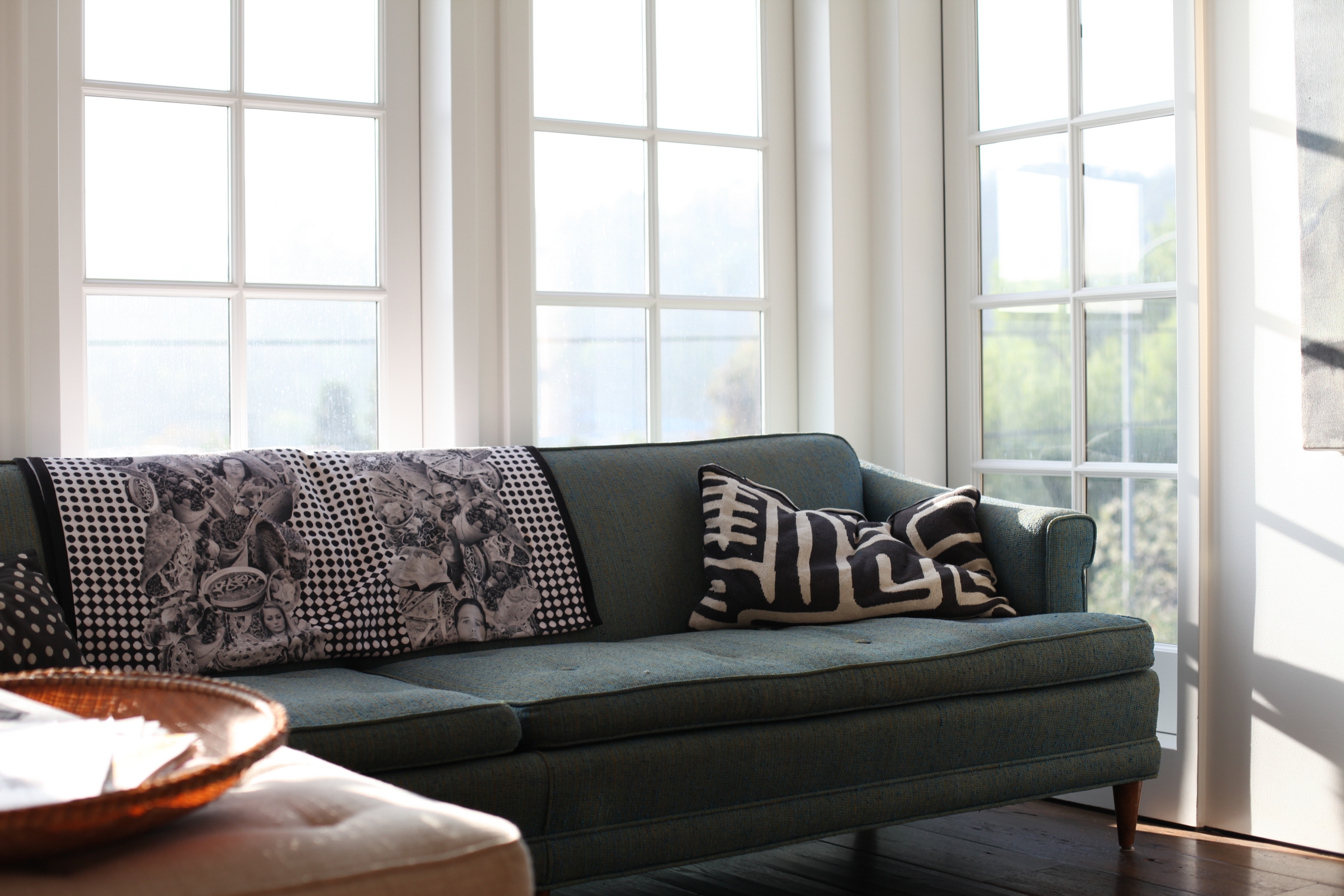
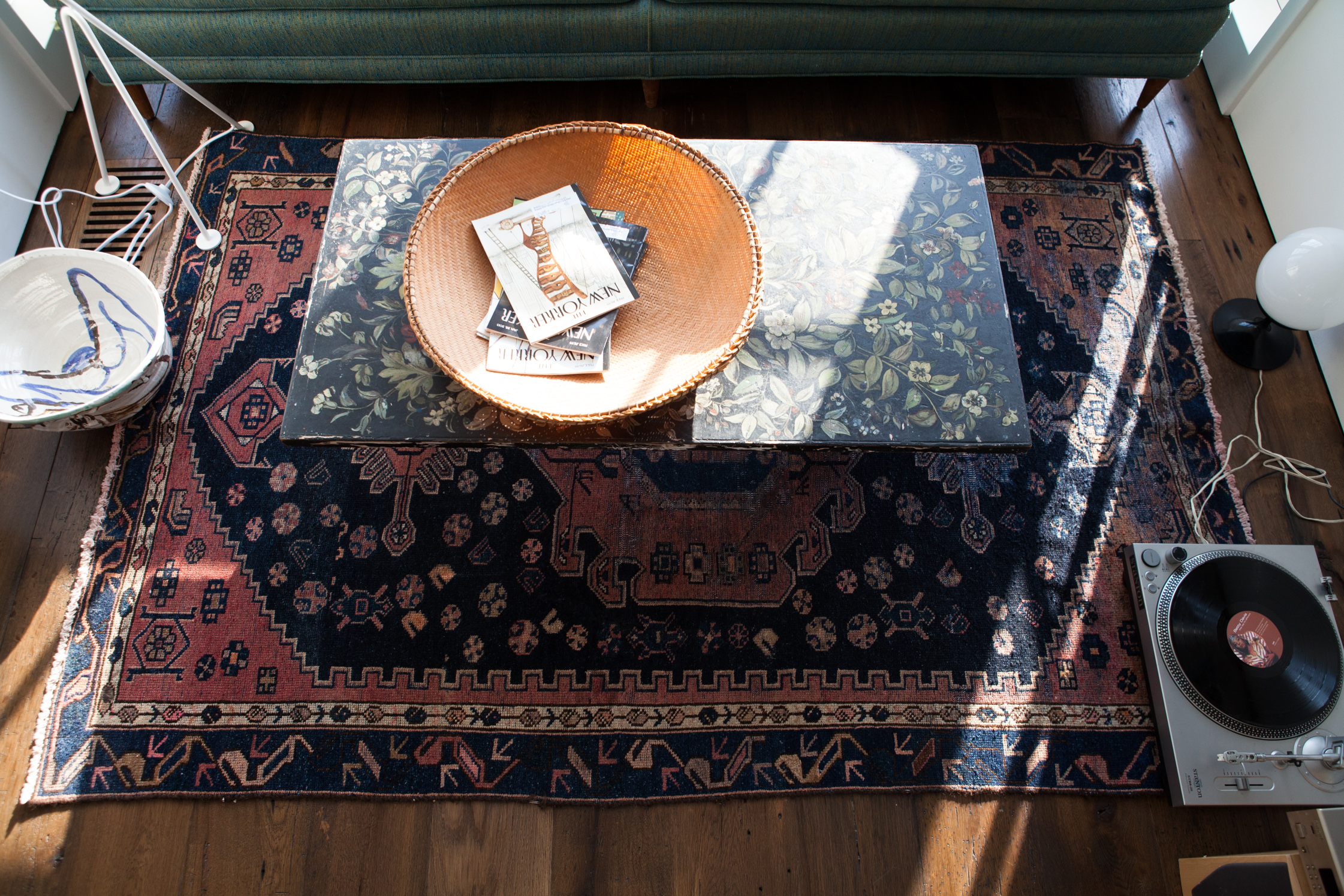
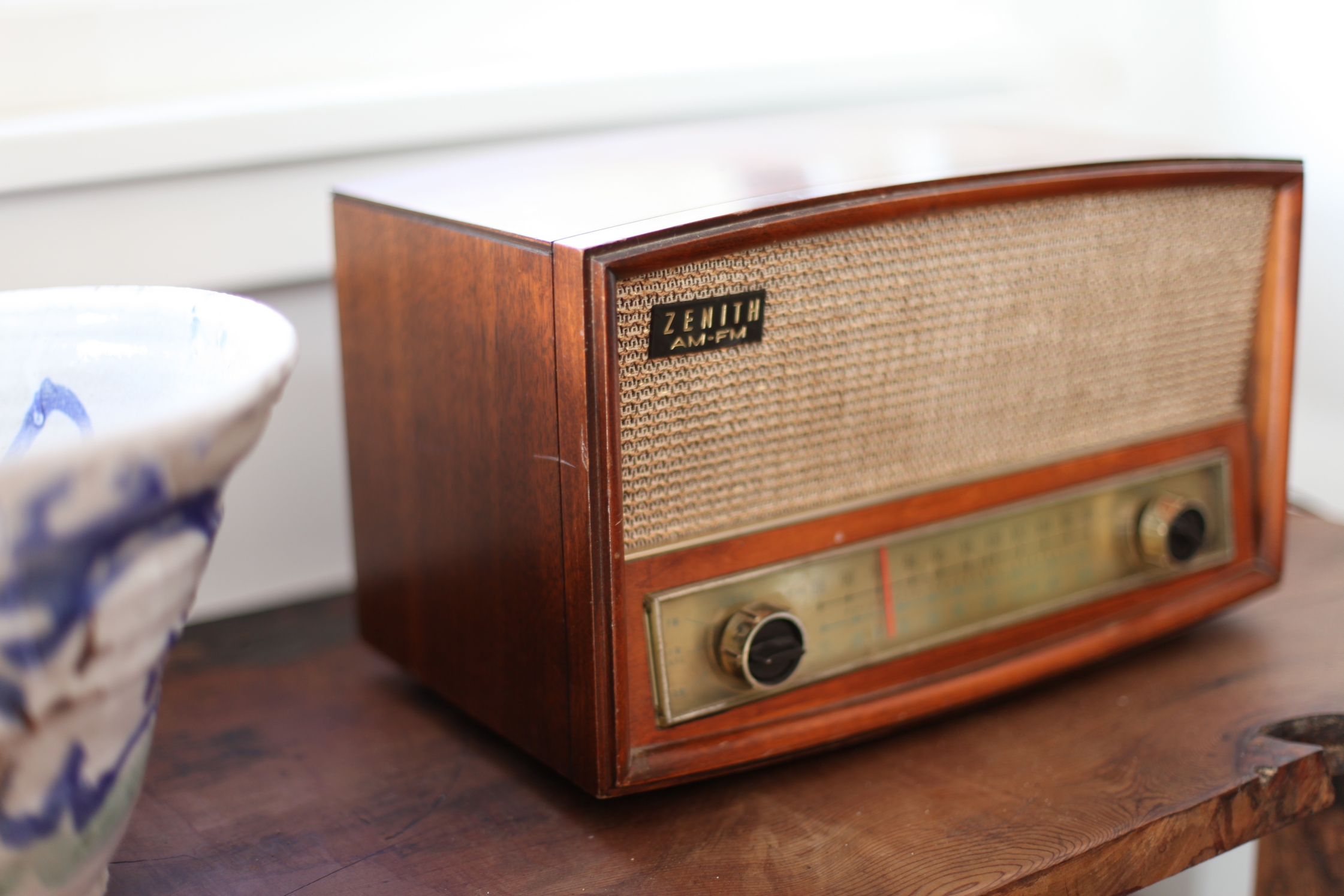
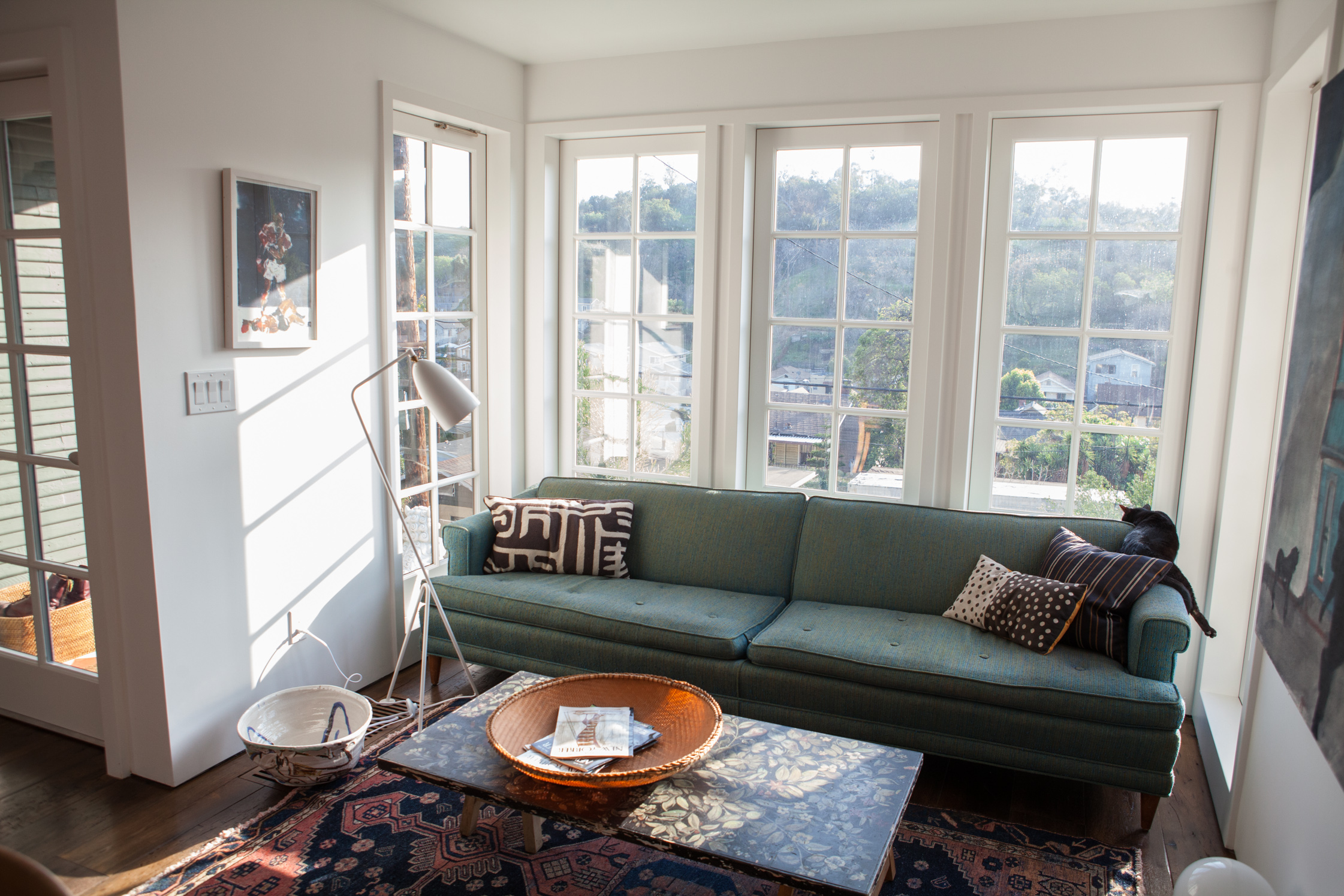
How did you get settled in Solano Canyon?
Becky: Canyon is almost a secret neighborhood in Los Angeles. It has the feeling of seclusion while being close to many dense, urban neighborhoods. When Cyril invited me to live here with him it was an easy decision to say yes. The house was about to be renovated so I also got to have some input on the changes. I feel lucky to have been included in the future of the house so early on in our relationship.
How long did the renovations take and what is it like living in a half-finished house?
Becky: Renovations are ongoing, and I can’t say it was a pleasure. We moved around the two apartments, up on the second level when they tore apart the downstairs and then downstairs when they redid the upstairs. It was fun because we had a lot of parties. Every new setup we had warranted a housewarming!
What do you love most about your space now?
Becky: I love that it is a small house that has been meticulously designed. Things can be fancy, but the home will always be humble because of its size. I also love the sunlight on the front porch in the afternoon and the big dining table on the deck under the Mulberry tree.
In which area of the house do you spend the majority of your time?
Becky: Well, I work out of the house, so realistically I probably spend most of my time in the bedroom sleeping. But I imagine I use all spaces somewhat equally.
Do you think you would ever set up a studio in the house? How do you feel about dual living and working spaces?
Becky: I might work in the house at some point, but right now I like having a separate studio. Cyril works here and sometimes I paint in the garden, but we don’t need to both share a work and living space.
Are you from LA originally?
Becky: I grew up in the San Fernando Valley. Consequently I have nostalgia for shopping malls, strip malls, and pretty much all retail environments. My parents worked in the film industry so my childhood was a mix of suburban and weird!
Have you found NY or LA more supportive for young artists and why?
Becky: I have seen people thrive in both. I think it’s a toss-up for which is a better city for artists.
You and Cyril like to travel a lot. What kinds of souvenirs do you tend to bring back from your travels?
Becky: We collect small things. Literally small things, like rocks from the desert, tiny masks from Venice, and Playmobils from Zurich. Oh, and puzzles. One of my favorites was an old Ravensburger puzzle of a Durer self-portrait. I bought it in a basement shop in Berlin.
How long did it take you to build up your book collection?
Becky: I have collected books from all times of my life. I mostly hang onto novels that mean alot to me. Books are such tactile objects, and when I see a cover or the layout of a page of a book I read in my teenage years it can trigger intense emotional memories. I can remember where I was when I read it and even details about my previous sense of identity which is uncanny.
You paint and draw portraits. Where do you find the inspiration or source material for your works?
Becky: I am inspired by social groups, mostly of women in the United States. I have a huge archive of found photographs including sorority girls, school portraits, glamour portraits, stand-up comedians, athletes, historical re-enactors and many more. In 2011 I made a body of work called ‘The Yackety Yack Girls of 1969’ from my father’s college yearbook. I did studies in soft pastel and then oil paintings of the sorority girls, alone and in groups. My main focus was looking at details in body language, gaze and clothing of that time.
Are you interested in non-figurative painting also?
Becky: I have been making pattern studies in pastel for the past few years that could be considered non-figurative. I like to draw the houndstooth design used for fabrics because it looks both classic and digital. It is a beautiful pattern to weave and a ridiculous pattern to print.
Who are some of your favorite artists and why?
Becky: I love Cindy Sherman, Alice Neel, Willem de Kooning and Philip Guston: for their humor and economy of means.
Finally, what is it like to live with another artist?
Becky: It is extremely inspiring. It will keep us young forever. I wouldn’t change it for the world.
Cyril, how did you get settled in Los Angeles, I understand you are originally from Switzerland?
Cyril: I spent my early twenties traveling and looking for a country or place to immigrate to. After spending time in Paris, Tokyo, and San Francisco, I got accepted into the film program at California Institute of the Arts and never looked back.
Where is your family from in Switzerland, and what do they do there?
Cyril: My father just recently retired from a long career at a Swiss newspaper. My mother and her now deceased parents were all artists. Rosina Kuhn and Adolf Funk were painters. Lissy Funk was a textile artist. They all lived in Zurich, where I grew up.
In your mind, what are the main differences between Swiss and American people?
Cyril: A really obvious difference: Americans love to fill wide open space with ugly objects and temporary structures. They love to accumulate and sprawl and still seem to be engaged in a battle to conquer the wild and untameable nature. In Switzerland all energy is focused on preserving and polishing the precious tiny entity.
Do you prefer America to Europe and if so why?
Cyril: I prefer heterogeneous complex places. National characters tend to grate on my nerves after a while. I live in LA, which happens to host the second largest Korean settlement worldwide, one of the largest Armenian populations, and still happens to be a 75% Hispanic city. If I ever feel desperate to experience white, Anglo-Saxon ‘true’ America in a particularly liberal variety, the Santa Monica freeway will take me there.
When did you start painting?
Cyril: After the initial rush of making videos I eventually got tired of dealing with failing technology and post-production. It turned out that I was already innately trained and programmed to be an oil painter. I love working in solitude and with immediacy. The idea and possibility of creating a satisfying painting spurs me on constantly and keeps me happy.
You mentioned you enjoy boxing, what inspiration do you take from boxing and attending boxing matches?
Cyril: Boxing is a amazing psychological experiment. Aside from all the athletic and technical attributes, intelligence and psychological insight is the boxer’s most amazing talent.
More than any other sport, a harsh drama with aesthetically controlled violence is presented as a metaphor for life and competition. The stakes are so high that it hardly resembles a game anymore. I remember staying up for some Muhammad Ali matches in my childhood. Ever since, boxing has been burned into my brain. In sparring, the three minute-round stretches out to an exhausting, painful length. Every uneconomical or unbalanced movement turns into a mistake, with the potential punishment executed by an able adversary. But also, having the upper hand and imposing your will, fear, and pain on the your opponent feels light and exhilarating. Executing a punch or combo perfectly on a bag or mitts or a human body is amazingly addictive.
Who are some of your favorite artists?
Cyril:James Ensor. I saw a big show in the Kunsthaus as a child that blew my mind. While being snubbed by the art world and getting support only from his toy-and-curiosity shop-owner father, he was able to create all these eccentric pieces. Andre Thomkins had a studio next to my mother’s in the Rote Fabrik in the 1980’s. I loved going to his studio where he let me create Lackskins – an invention of his. He played firewood xylophones and painted the opposite shore of Lake Zurich through binoculars.
Why do you prefer painting to other artistic mediums?
Cyril: I want to create subtle, ambiguous narratives. Painting used to be a placeholder over film as the only visual entertainment. I think it can still occupy an important place. I love that painting is a less attention-demanding medium and does not force you to turn on technology and endure trailers and irrelevant introductions or segways. Watching a film over and over, as a filmmaker, through editing and then screenings turns almost always into some kind of torture.
Cyril and Becky thanks so much for your time and generosity in showing us your home in Los Angeles. To find out more about Cyril’s art practice see his website here, and see Becky’s website here.
This portrait is part of our ongoing collaboration with ZEIT Online who present a special curation of our pictures on their site. Have a look here.
Photography: Marco Annunziata
Interview & Text: Yan Yan Huang
